What diseases cause skin rashes. Skin Rash Diseases: Comprehensive Guide to Types, Causes, Symptoms, and Treatments
What are the common diseases that cause skin rashes. How can you identify different types of erythema. What are the symptoms and treatments for various skin rash conditions. Learn about erythema multiforme, erythema nodosum, and other skin disorders in this comprehensive guide.
Understanding Erythema: The Common Skin Rash Condition
Erythema is a general term for skin redness or rash that can manifest in various forms and patterns. These rashes can appear on any part of the body and may vary in color from red to purple or brown. In some cases, erythema can lead to blisters that burst and form sores.
The causes, symptoms, and treatments of erythema depend on its specific type. While milder cases often resolve on their own within days or weeks, more severe forms may require medication or hospitalization.
Erythema Multiforme: The Most Common Type of Erythema
Erythema multiforme (EM) is the most prevalent form of erythema. It is primarily caused by viral and bacterial infections, with Herpes simplex virus (HSV) types 1 and 2 and Mycoplasma pneumoniae being the most common culprits. In rare cases, EM can be triggered by a reaction to drugs or vaccines.

Medications Associated with Erythema Multiforme
- Allopurinol (gout medication)
- Certain antibiotics (aminopenicillins, sulfonamides)
- Anti-seizure medications
Erythema multiforme typically affects individuals between the ages of 20 and 30, with 20% of cases occurring in children. Diagnosis is usually based on visual examination, although additional tests may be performed to rule out other conditions.
Types of Erythema Multiforme
There are two main types of erythema multiforme:
- Erythema multiforme minor (EM minor): This form typically affects peripheral body parts like fingers and toes. It may occasionally cause mild mouth sores and usually resolves on its own.
- Erythema multiforme major (EM major): This more severe form causes extensive skin lesions and is often associated with drug reactions. It may also be referred to as Stevens-Johnson Syndrome (SJS) in some cases.
Symptoms of Erythema Multiforme
The symptoms of erythema multiforme can range from mild to severe and may include:
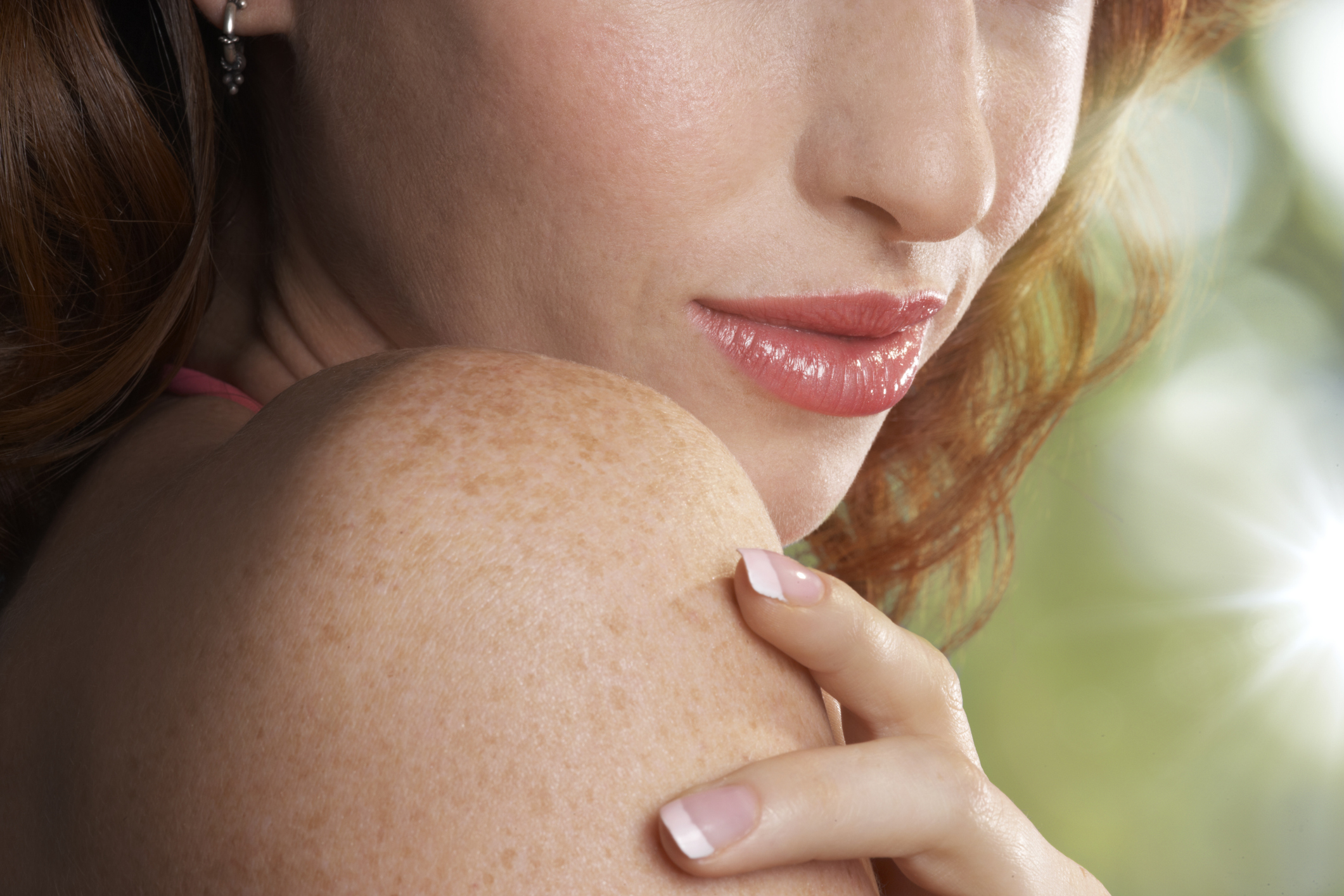
- Circular, red bumps on the soles, palms, arms, face, and legs
- Itchiness (in some cases)
- Painful sores or blisters on the lips, mouth, eyes, and genitals
- Target lesions (red patches with pale rings and purple centers)
- Fever
- Joint pain
Treatment Options for Erythema Multiforme
How is erythema multiforme treated? In most cases, EM minor resolves on its own within a few weeks. However, doctors may recommend topical corticosteroids and anesthetics to manage symptoms. For mouth sores, medicated mouthwashes may be prescribed.
For recurrent cases suspected to be caused by herpes flares, antiviral therapies such as acyclovir or valacyclovir may be prescribed. Erythema multiforme major, being more severe, often requires hospitalization with intravenous fluids and supportive care.
Erythema Nodosum: The Painful Nodular Rash
Erythema nodosum is characterized by red, tender bumps that primarily appear on the shins. This condition affects one to five in 100,000 people and can occur at any age, though it’s most common in individuals between 20 and 30 years old.

Causes of Erythema Nodosum
What causes erythema nodosum? The primary triggers for this condition include:
- Streptococcal infections (most common in children)
- Drug reactions
- Hormonal changes
- Inflammatory bowel disease
Symptoms and Treatment of Erythema Nodosum
In addition to the characteristic red bumps, symptoms may include fever, joint pain, and enlarged lymph nodes in the chest. Although not typically serious, erythema nodosum can persist for about six weeks.
Treatment options for erythema nodosum include:
- Corticosteroids
- Antibiotics
- Nonsteroidal anti-inflammatory drugs (NSAIDs)
- Bed rest
Erythema Marginatum: The Distinctive Ring-Shaped Rash
Erythema marginatum is a distinctive skin rash characterized by ring-shaped, pink or red patches with clear centers. This rare condition is often associated with rheumatic fever, a complication of untreated strep throat or scarlet fever.
Key Features of Erythema Marginatum
- Appears as expanding, ring-shaped lesions
- Typically found on the trunk and inner surfaces of arms and legs
- Lesions may change shape and location rapidly
- Usually not itchy or painful
How is erythema marginatum diagnosed? Diagnosis is typically based on the distinctive appearance of the rash and its association with rheumatic fever symptoms. Treatment focuses on addressing the underlying rheumatic fever with antibiotics and managing symptoms.
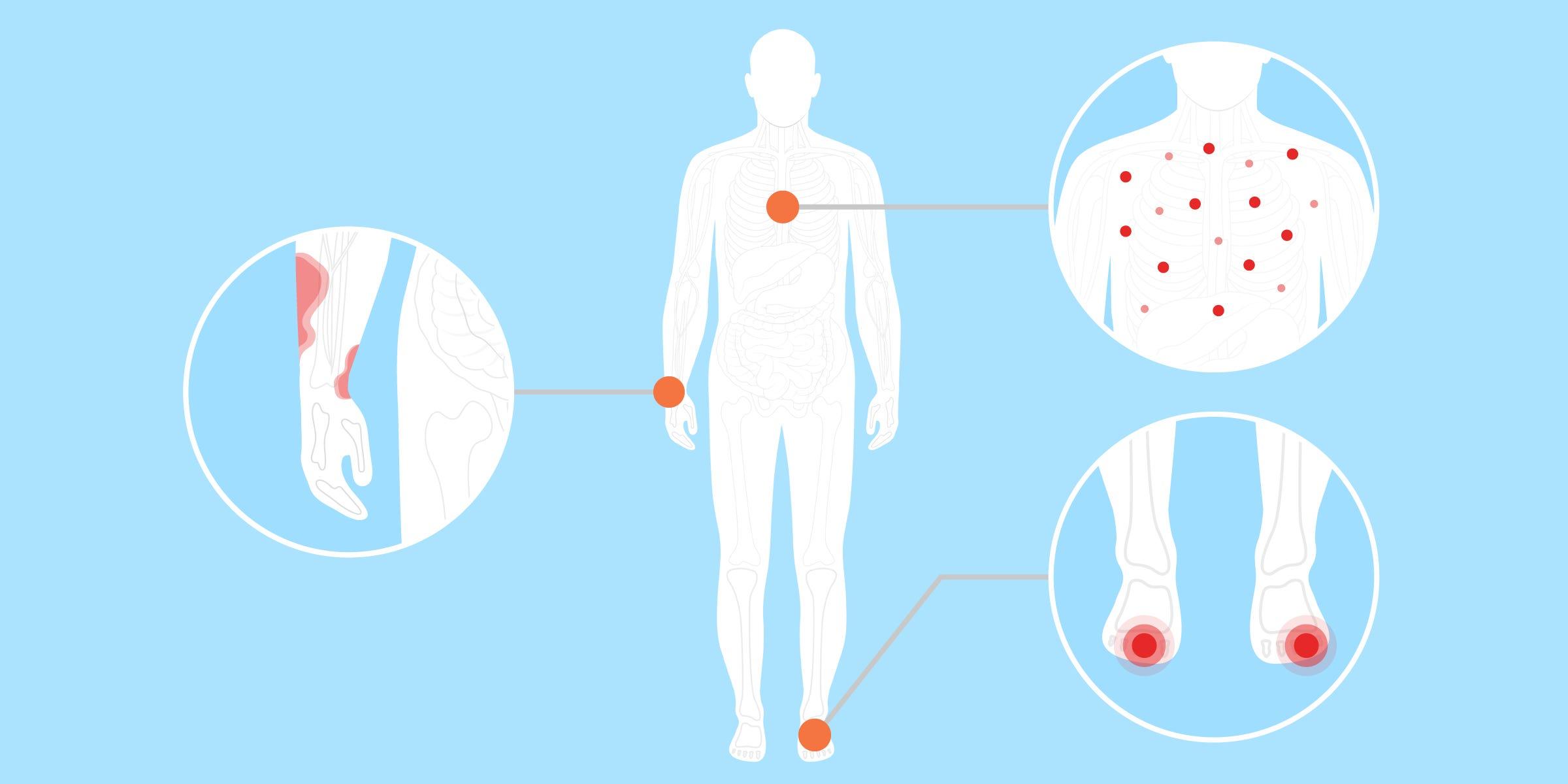
Erythema Toxicum Neonatorum: The Newborn Rash
Erythema toxicum neonatorum is a common, benign skin condition that affects newborns, typically appearing within the first few days after birth. Despite its alarming appearance, it is harmless and resolves on its own without treatment.
Characteristics of Erythema Toxicum Neonatorum
- Red, blotchy rash with small yellowish-white bumps
- Affects up to 50% of newborns
- Usually appears on the face, trunk, and limbs
- Typically resolves within a week
What causes erythema toxicum neonatorum? The exact cause is unknown, but it is believed to be a normal reaction of the newborn’s skin to the new environment outside the womb. No treatment is necessary, and parents should be reassured about its benign nature.
Erythema Infectiosum: The “Fifth Disease”
Erythema infectiosum, also known as “fifth disease” or “slapped cheek syndrome,” is a viral infection caused by parvovirus B19. It primarily affects children but can occur in adults as well.
Symptoms and Progression of Erythema Infectiosum
- Initial symptoms: Fever, runny nose, headache
- Characteristic rash: Bright red cheeks (“slapped cheek” appearance)
- Lacy, red rash on arms, legs, and trunk
- Joint pain and swelling (more common in adults)
How long does erythema infectiosum last? The rash typically lasts 1-3 weeks, but can come and go for several months, especially with exposure to heat, sunlight, or stress.
![]()
Treatment is generally supportive, focusing on symptom relief. Most cases resolve on their own without complications. However, pregnant women and individuals with weakened immune systems or certain blood disorders should seek medical attention if exposed to or infected with parvovirus B19.
Erythema Migrans: The Telltale Sign of Lyme Disease
Erythema migrans is a distinctive skin rash associated with Lyme disease, a tick-borne illness caused by the bacterium Borrelia burgdorferi. This rash is often the first and most recognizable sign of Lyme disease infection.
Key Features of Erythema Migrans
- Appears at the site of a tick bite, usually within 3-30 days
- Begins as a small red spot that expands over days
- Often develops a characteristic “bull’s-eye” pattern
- Can grow to 12 inches or more in diameter
- May be warm to the touch but is usually not painful or itchy
How is erythema migrans treated? If erythema migrans is observed, prompt antibiotic treatment is crucial to prevent the progression of Lyme disease. Common antibiotics used include doxycycline, amoxicillin, or cefuroxime axetil, typically prescribed for 10-14 days.
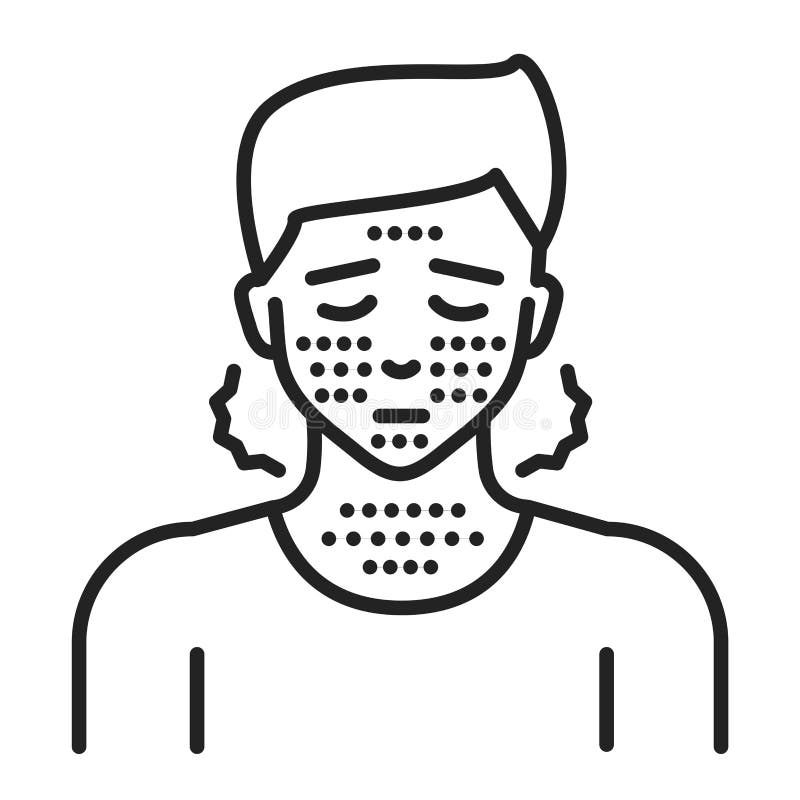
It’s important to note that not all cases of Lyme disease present with erythema migrans, and the absence of this rash does not rule out the possibility of infection. Other early symptoms of Lyme disease may include fever, chills, fatigue, body aches, and headaches.
Erythema Ab Igne: The “Toasted Skin Syndrome”
Erythema ab igne, also known as “toasted skin syndrome” or “fire stains,” is a skin condition caused by prolonged exposure to heat or infrared radiation. This condition results in a distinctive net-like or reticulated pattern of hyperpigmentation on the skin.
Causes and Risk Factors of Erythema Ab Igne
- Prolonged use of heating pads or hot water bottles
- Sitting too close to fireplaces or space heaters
- Use of laptops directly on the skin for extended periods
- Occupational exposure to heat sources (e.g., bakers, silversmiths)
What are the stages of erythema ab igne? The condition typically progresses through several stages:
- Mild redness and temporary discoloration
- Persistent redness and hyperpigmentation
- Development of the characteristic reticulated pattern
- In severe cases, skin atrophy and telangiectasias
Treatment and Prevention of Erythema Ab Igne
How can erythema ab igne be treated? The primary treatment is to remove the source of heat exposure. In many cases, the discoloration will fade over time, although this can take months or even years. For persistent cases, treatments may include:
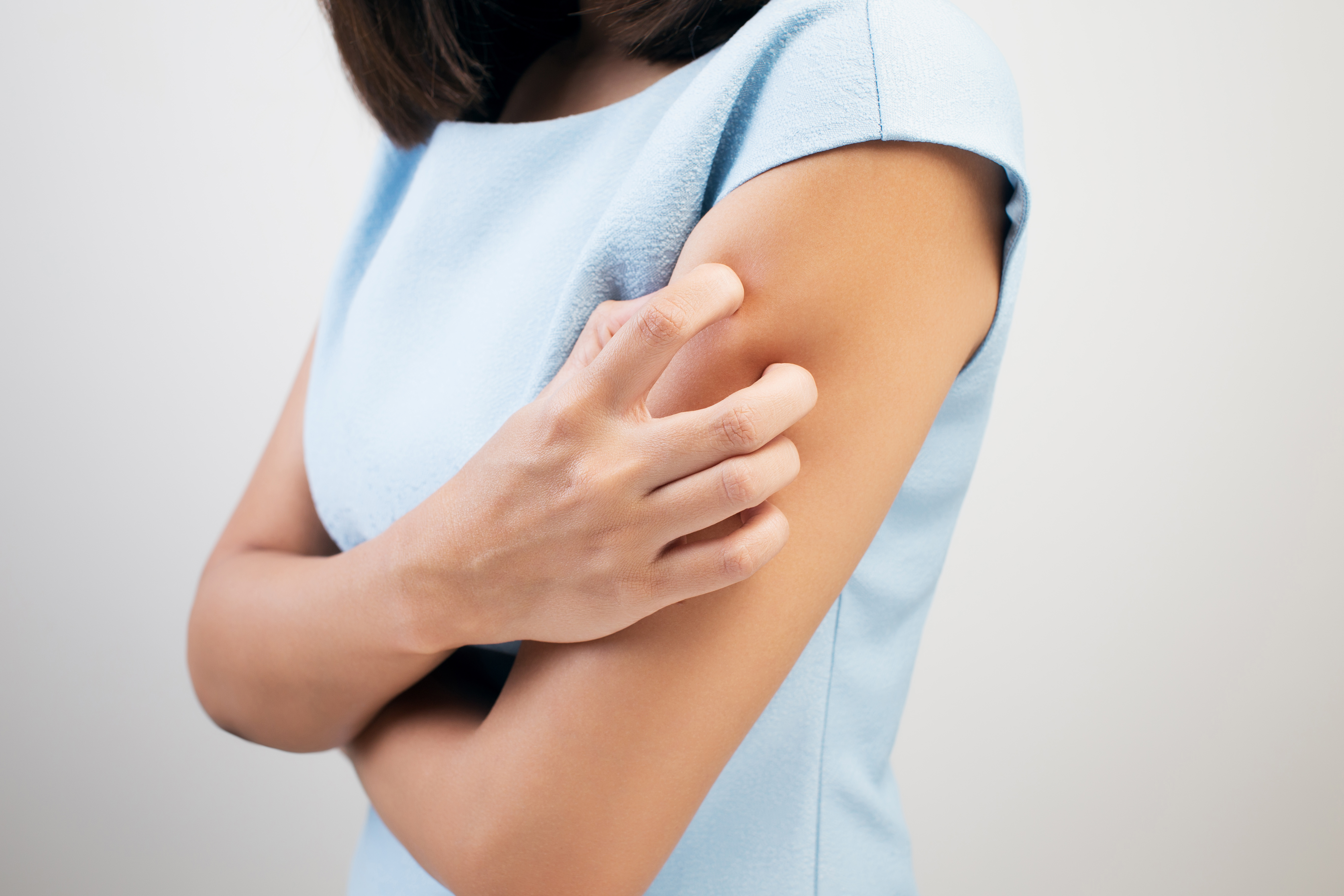
- Topical retinoids to improve skin appearance
- Laser therapy for severe hyperpigmentation
- Regular skin checks, as chronic erythema ab igne may increase the risk of skin cancer
Prevention is key in managing erythema ab igne. Avoid prolonged exposure to heat sources, use protective barriers when using heating devices, and be mindful of occupational heat exposure.
Erythema Annulare Centrifugum: The Mysterious Ring-Shaped Rash
Erythema annulare centrifugum (EAC) is a rare inflammatory skin condition characterized by ring-shaped or arcuate (bow-shaped) lesions that slowly expand outward. The exact cause of EAC is often unknown, but it may be associated with various underlying conditions.
Characteristics of Erythema Annulare Centrifugum
- Ring-shaped or arcuate red lesions
- Lesions expand outward, clearing in the center
- May have a trailing scale at the inner border
- Usually asymptomatic, but can be mildly itchy
- Can occur anywhere on the body, but often on the thighs and legs
What causes erythema annulare centrifugum? While the exact cause is often unclear, EAC has been associated with:
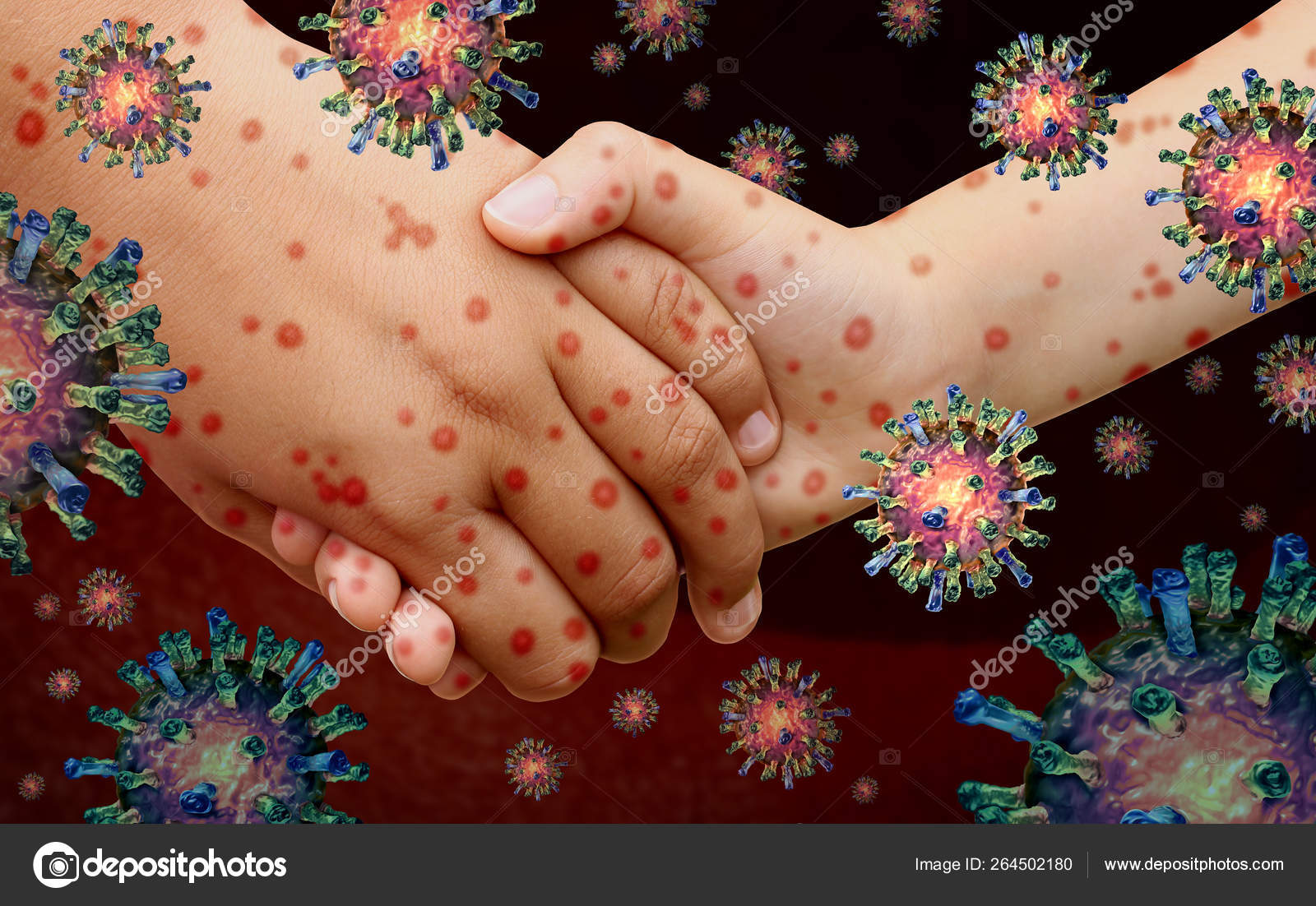
- Infections (fungal, viral, or bacterial)
- Medications
- Underlying medical conditions (e.g., thyroid disorders, cancer)
- Food allergies
Diagnosis and Treatment of Erythema Annulare Centrifugum
How is erythema annulare centrifugum diagnosed? Diagnosis is typically based on the characteristic appearance of the rash and may include:
- Skin biopsy to confirm the diagnosis and rule out other conditions
- Blood tests to check for underlying systemic diseases
- Allergy tests if a food allergy is suspected
Treatment of EAC focuses on addressing any underlying causes and managing symptoms. Options may include:
- Topical corticosteroids to reduce inflammation
- Oral antihistamines for itching
- Treatment of any identified underlying conditions
- In persistent cases, systemic treatments like metronidazole or calcipotriene may be considered
Many cases of EAC resolve spontaneously within weeks to months, but some may persist for years or recur. Long-term follow-up may be necessary to monitor for any underlying conditions that could be associated with the rash.

Types, Causes, Symptoms and Treatments
There are several types of erythema, and it can appear on all parts of the body in different patterns and variations of color such as red, purple or brown. Some forms of the rash may cause blisters that burst and lead to sores.
Causes, symptoms and treatment depend on the type of erythema. Milder cases go away in a few days or weeks without treatment. More serious cases require medication or hospital care.
An example of erythema multiforme, the most common type of erythema.
Photo Credit: James Heilman, MD
Erythema Multiforme
Erythema multiforme (EM) is the most common type of erythema. Viral and bacterial infections cause it. Two of the most common causes are Herpes simplex virus (HSV) type 1 and 2 and Mycoplasma pneumoniae infections.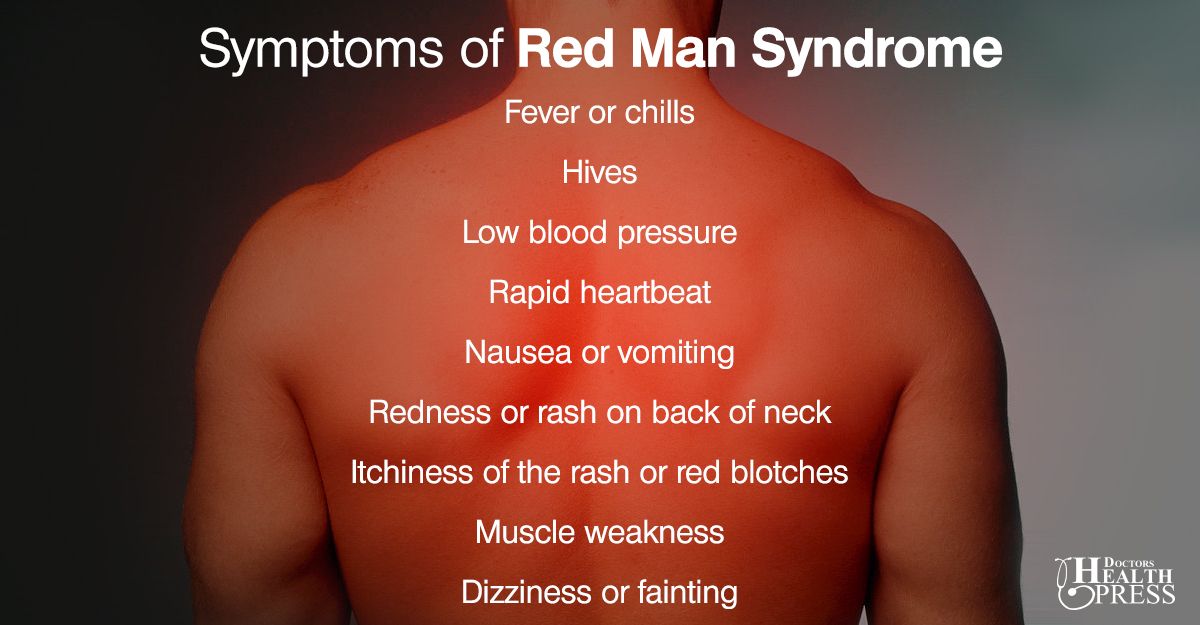
More rarely, it can be a reaction to a drug or vaccine, according to The National Library of Medicine.
Medications that may cause EM include:
- Gout medication called allopurinol
-
Some antibiotics (aminopenicillins, sulfonamides) -
Anti-seizure medications
This rash typically affects people between the ages of 20 and 30. Twenty percent of people who get it are children.
There are no blood tests for EM, and doctors diagnose it by looking at it. But in some cases, they may do some tests to rule out other diseases.
Types
There are two types of EM, minor and major.
Erythema multiforme minor (EM minor) typically occurs on the peripheral parts of the body, such as the fingers and toes.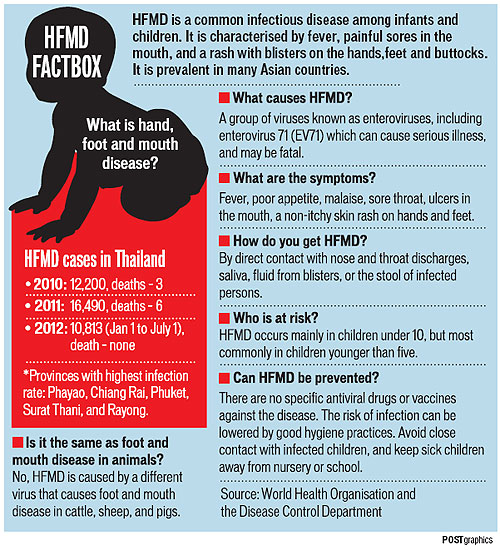 Rarely, it may manifest as light mouth sores. It usually clears up on its own.
Rarely, it may manifest as light mouth sores. It usually clears up on its own.
Erythema multiforme major (EM major) skin lesions are more extensive and serious. These are more likely to be caused by a drug reaction than an infection. For this reason, EM major may also be known as Stevens-Johnson Syndrome (SJS), a potentially life-threatening skin rash caused by a medication.
Unlike EM minor, EM major causes extensive, blistering sores on the lips and in the mouth. They can also appear on the eyes and genitals.
Symptoms
A person with EM may have all or some of the following symptoms and they may range from mild to severe.
Symptoms include:
- Circular, red bumps on the soles, palms, arms, face and legs that grow into circles that may look like targets
-
Itchiness, in some cases -
Painful sores or blisters on the lips, mouth, eyes and genitals -
Red patches with pale rings inside the patch with purple centers and small blisters called target lesions -
Fever -
Joint pain
Treatment
EM usually goes away on its own in a few weeks. EM major takes longer to go away. Doctors often recommend topical corticosteroids and anesthetics to control symptoms. If there are sores in the mouth, doctors may recommend a mouthwash.
EM major takes longer to go away. Doctors often recommend topical corticosteroids and anesthetics to control symptoms. If there are sores in the mouth, doctors may recommend a mouthwash.
Symptoms may go away and come back. If doctors suspect herpes flares cause the EM reoccurrences, they may prescribe antiviral therapies such as acyclovir or valacyclovir.
Erythema multiforme major is more serious and requires hospital care with intravenous fluids and supportive care.
Erythema Nodosum
Erythema nodosum appears as red, tender bumps that appear on the shins. Most nodules appear on the lower extremities. Reactions to a disease or medication are the main causes.
Overall, this rash affects one to five in 100,000 people.
It can occur at any age, but most often affects people between the ages of 20 and 30. Streptococcal infections are the most common cause among children. Drug reactions, hormonal reaction and inflammatory bowel disease are among the most common causes in adults.
Drug reactions, hormonal reaction and inflammatory bowel disease are among the most common causes in adults.
In addition to red bumps, symptoms include fever, joint pain and enlarged lymph nodes in the chest.
This condition is not typically serious, and it goes away in about six weeks, according to Johns Hopkins Medicine. Treatments include corticosteroids, antibiotics, nonsteroidal anti-inflammatory medicines (NSAIDs) and bed rest.
Erythema Marginatum
Erythema marginatum is a skin rash that typically appears on the limbs and trunk of the body. It can appear as a pale, pink center with a darker red outline.
These spots are typically round, but can be irregular or elongated shapes. They aren’t usually itchy or painful.
It most often occurs in response to rheumatic fever. Other causes include Lyme disease, allergic reactions to drugs or hereditary angioedema./sick-female-with-allergy--health-care-concept-1188977393-f5dd5b1617b44412869a478cd6d88aa0.jpg)
The rash typically fades on its own, but doctors may prescribe medications for any underlying diseases.
Erythema Toxicum
Erythema toxicum or erythema toxicum neonatorum is a common skin rash that affects about 40 to 70 percent of full-term newborns, according to American Family Physician. It can happen at birth, but most babies get it in their second or third day of life.
It appears as pustules surrounded by blotchy patches of redness, often described as a “flea-bitten” appearance. These pustules may be filed with fluid, but it doesn’t indicate infection. The rash can occur anywhere on the trunk, face and extremities, but the soles and palms are not involved.
Doctors don’t know what causes the condition, but it’s not serious and typically fades over five to seven days without treatment. Sometimes it can reoccur.
Fifth Disease
Erythema infectiosum is also called fifth disease./chickenpox-symptoms1-5ae1f76a30371300367d3032.png) It’s a mild rash caused by parvovirus B19, and is more common in children.
It’s a mild rash caused by parvovirus B19, and is more common in children.
The most noticeable feature is a red rash on the face sometimes called “slapped-cheek” rash, according to the Centers for Disease Control and Infection. It appears within 14 days after parvovirus infection.
Other symptoms include fever, headache and runny nose. The rash may spread from the face to the neck, chest, buttocks, legs, arms or soles of the feet a few days after getting it on the face. People with fifth disease may also experience joint pain lasting for one to three weeks. In some people it can last for months or longer, but it doesn’t cause long-term problems.
Symptoms typically go away within seven to 10 days. Treatment includes supportive care to relive itching, fever and swelling.
Palmar Erythema
Palmar erythema is a red rash on the palms and sometimes on the fingers.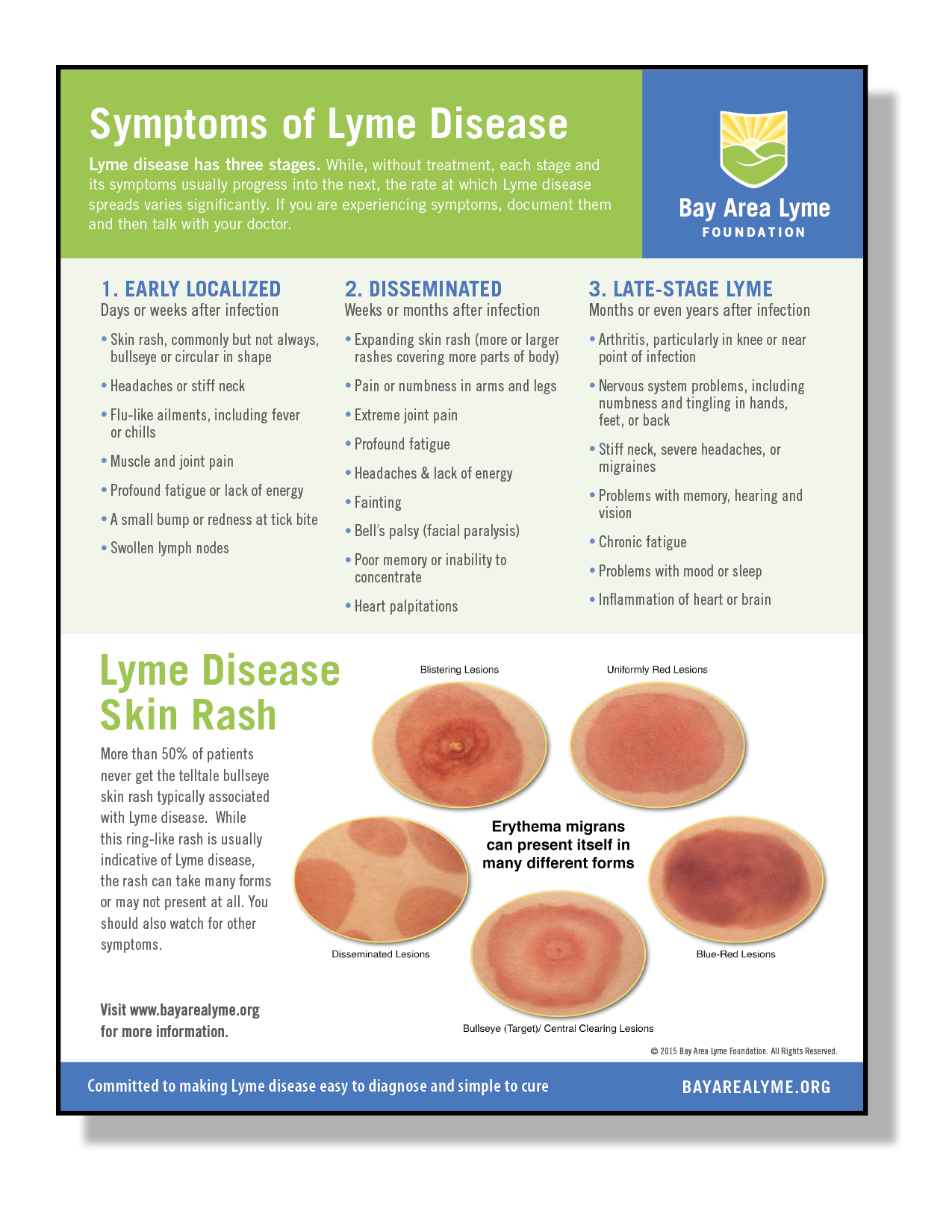 It is slightly warm but not painful or itchy. It occurs on both hands. It can get redder with changes in temperature, pressure on the palm, emotional states or hand elevation.
It is slightly warm but not painful or itchy. It occurs on both hands. It can get redder with changes in temperature, pressure on the palm, emotional states or hand elevation.
This condition is caused by pregnancy, underlying disease or reactions to medications. Depending on the cause, it is referred to as primary palmar erythema or secondary palmar erythema.
Causes of primary palmar erythema include:
- Heredity
-
Unknown allergies or causes -
Pregnancy – It occurs in about 30 percent of pregnant women
Causes of secondary palmar erythema include:
- Autoimmune diseases, such as rheumatoid arthritis
-
Diabetes -
Drug reactions -
Infections and diseases such as cancer, chronic obstructive lung disease -
Liver disease -
Thyrotoxicosis
There is no treatment for palmar erythema.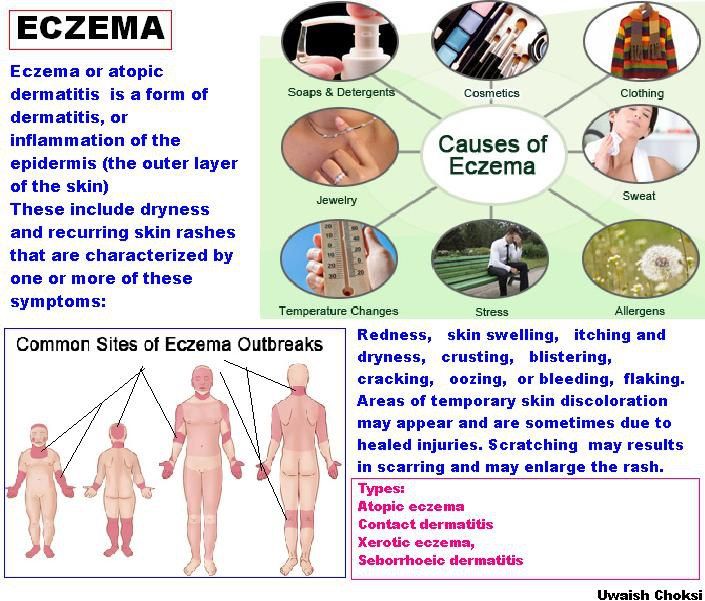 Doctors will test you for underlying diseases that could be causing it and recommend treatment for those health issues. If they think a drug caused the rash, they may recommend stopping that treatment.
Doctors will test you for underlying diseases that could be causing it and recommend treatment for those health issues. If they think a drug caused the rash, they may recommend stopping that treatment.
Erythema Chronicum Migrans
Erythema chronicum migrans, or erythema migrans, is a skin rash that occurs in people with early Lyme disease, a disease caused by the bite of an infected tick. Erythema migrans begins at the site of the tick bite in about 70 to 80 percent of people infected with Lyme disease, according to the CDC.
On average, the rash appears about seven days after a tick bite, though it can appear anywhere from three to 30 days at the site of the tick bite.
The rash gradually expands, forming a red spot surrounded by a bigger red ring, like a bull’s-eye. The rash can expand up to about 12 inches across. But sometimes it appears as a red patch with central hardening and blistering. The color intensity ranges from light pink to a deep purple.
The color intensity ranges from light pink to a deep purple.
This type of rash is rarely painful, but can be sensitive and warm to the touch as well as itchy. A person with this rash may also experience other symptoms of Lyme disease such as joint aches, headache, fever and chills.
There is no specific treatment for erythema migrans, except for supportive care to control itching. If Lyme disease is treated with antibiotics, the rash usually goes away in a few weeks.
Erythema Ab Igne
Erythema ab igne is an uncommon rash caused by repeated exposure to infrared radiation or direct heat to the skin. Sources of heat include warm water bottles, heating pads, laptop computers and space heaters.
The lesions appear like mottled, mildly pink patches and then turn red or violet, then brown. These patches form lace-like or fishnet patterns.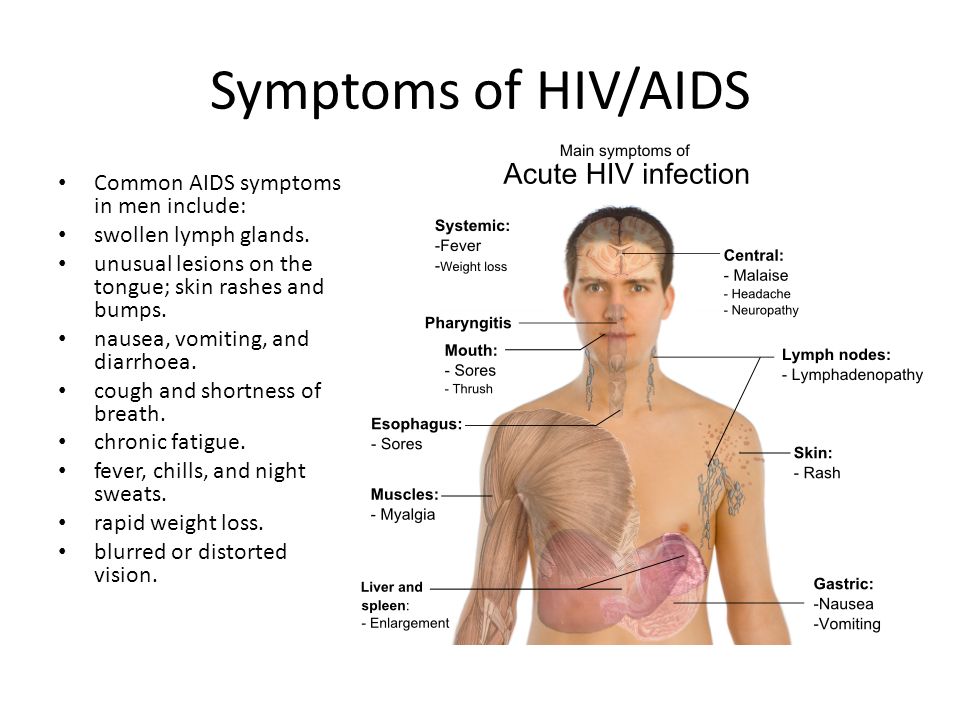 They don’t usually cause symptoms but can itch, burn or cause pain.
They don’t usually cause symptoms but can itch, burn or cause pain.
Treatment consists of removing the heat source that could be causing the rash. Mild cases can go away in a few months. But more advanced cases may linger for years or be permanent. In these cases, treatment includes tretinoin, 5-fluorouracil or laser therapy to improve appearance.
Rarely, erythema ab igne may lead to cancer. A dermatologist should monitor the rash and may recommend a biopsy for long-lasting rashes.
Erythema Annulare Centrifugum
Erythema annulare centrifugum (EAC) is a rare skin rash characterized by tiny, red bumps spreading out from a central patch of skin. They may form irregular shapes, but more often they form a circular, ring-like pattern.
EAC most often affects the thighs or legs. It is more likely to occur in mid-life, but there have also been reports of the rash in infants.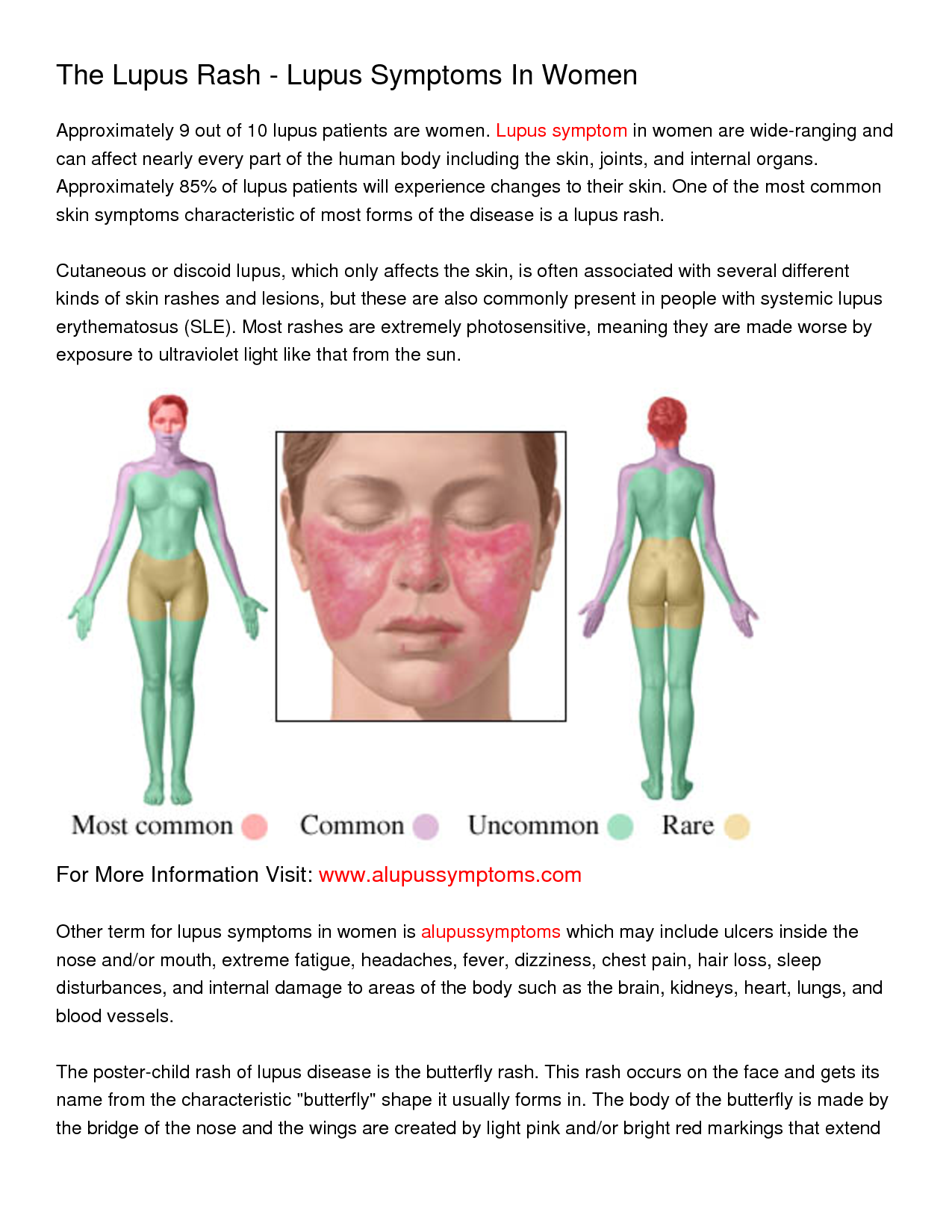
Researchers aren’t sure what causes this rash, but it has been associated with fungal infections, viruses and bacteria. Some medications and foods may also trigger it.
Rarely, EAC can happen when the immune system has an abnormal response to cancer cells called a paraneoplastic phenomenon. In these cases, it’s referred to as paraneoplastic erythema annulare centrifugum eruption, or PEACE. This is more common in females.
If a doctor suspects PEACE, he or she will test for cancer. Some cancers associated with EAC include lymphoma, leukemia, solid tumors and lymphoproliferative disorders.
Symptoms, Causes, Types and Treatments
Psoriasis is a common disease, and more than eight million Americans have it, according to the National Psoriasis Foundation.
Psoriasis comes and goes in spurts. When the disease is active, it is called a flare. Flares can last for weeks or months and then go into remission or subside.:max_bytes(150000):strip_icc()/menigitis_symptoms-5b0d5dbd0e23d90036bd6770.jpg) Manifestations of the disease range from a few spots of scaly skin that resemble dandruff to more severe flare-ups that cover bigger areas of the body.
Manifestations of the disease range from a few spots of scaly skin that resemble dandruff to more severe flare-ups that cover bigger areas of the body.
It’s not contagious, but it’s more than a cosmetic problem. About 60 percent of people with psoriasis said the disease interferes with their daily lives.
There is no cure for psoriasis, but people with psoriasis have treatment options aimed at controlling symptoms. Common treatments include light therapy (phototherapy), ointments, and medications.
EXPAND
What Are the Signs and Symptoms?
Psoriasis signs and symptoms vary from person to person. Depending on the type and severity of the disease, it may manifest differently.
People with psoriasis are also more likely to have co-occurring health conditions, including cardiovascular problems, obesity, high blood pressure and diabetes.
Common signs and symptoms include:
- In children, smaller, scaly spots
-
Nails that are thick, ridged or pitted -
Pain, swelling or warmth -
Patches of red skin with thick, silvery scales -
Scaly scalp -
Skin that is dry and cracked, sometimes it itches or bleeds -
Soreness, burning or itching -
Stiff and achy joints
How Serious Is It?
Psoriasis can be mild, moderate or severe depending on the percent of body surface area affected. The scale goes from less than three percent to over 10 percent.
For reference, a hand is about the same as one percent of skin surface, according to The National Psoriasis Foundation. How a person’s quality of life is affected is also a factor in classifying disease severity.
How a person’s quality of life is affected is also a factor in classifying disease severity.
EXPAND
What Causes It?
Scientists don’t know exactly what causes psoriasis, but they know it’s an autoimmune disease. This means the body’s immune system overreacts, causing other health problems.
Immune cells called T cells become overactive and trigger immune responses such as swelling and abnormally quick skin cell growth, according to the National Institute of Arthritis and Musculoskeletal and Skin Diseases.
In people without psoriasis, skin cells usually take about a month to go through their life cycle. But in people with psoriasis, it only takes a few days. These extra skin cells grow deep in the skin and rise to the surface, causing red, scaly patches.
A few factors can cause flares.
Some things that trigger symptoms or flares include:
- Alcoholism
-
Infections -
Pregnancy -
Reactions to some medicines -
Stress -
Things that damage the skin, including sunburns, scrapes or cuts -
Weather changes that cause dry skin
Is It Hereditary?
Research suggests that psoriasis is hereditary, meaning it runs in families. One in three people with psoriasis report having a family member with the disease.
A child with one parent with psoriasis has a 10 percent chance of also having it. If a child has two parents with psoriasis, the likelihood they will get the disease increases to 50 percent, according to the National Psoriasis Foundation.
Most of these types of disease are chronic, but not life threatening. The rarest type, called erythrodermic psoriasis, is a severe disease and is a medical emergency.
Types of Psoriasis
According to the National Psoriasis Foundation, there are five main types of psoriasis. Each type differs in severity and symptoms. Doctors will vary the treatment recommendations depending on the type.
Plaque Psoriasis
Plaque psoriasis is the most common form. It appears as patches of red, raised skin covered with a silvery buildup of dead skin. These patches most commonly affect the scalp, elbows, knees and lower back.
Guttate Psoriasis
Guttate psoriasis most often affects children or young adults. This type of psoriasis appears as small, red, scaly dots on the trunk, arms and legs. Strep throat infections are a typical trigger.
Inverse Psoriasis
Inverse psoriasis affects the body in places with skin folds such as behind the knee, in the groin or under the arm. Unlike plaque psoriasis, it typically appears red, shiny and smooth. People who have this type of psoriasis usually have it on more than one part of the body at the same time.
Pustular Psoriasis
Pustular psoriasis is a rarer type of psoriasis that manifests as red skin with pustules, or blisters, filled with non-infectious pus. It occurs most often on the hands or feet, though it can occur anywhere on the body. The liquid in the blisters is made of white blood cells, and despite how it looks it is not an infection nor is it contagious.
Erythrodermic Psoriasis
Erythrodermic psoriasis is a very severe, but rare form of the disease. Only about three percent of people with psoriasis have this type. It causes extreme, widespread redness over most of the body. Skin layers come off in sheets and cause severe itching and pain. It can also cause dehydration, body temperature changes, changes in heart rate and nail changes.
It can also cause dehydration, body temperature changes, changes in heart rate and nail changes.
This is a medical emergency. Seek medical help right away if you think you have erythrodermic psoriasis because it can be life threatening.
Diagnosis & Treatment
Doctors diagnose psoriasis by examining the rash or lesions. He or she will look at the scales and plaques and where they appear on the body.
Sometimes, the doctor will take a skin sample and send it off to a lab, a procedure called a biopsy. This allows the doctor to rule out other skin disorders such as skin cancer.
Treatment for psoriasis includes topical therapy, phototherapy (light therapy) and medications. Sometimes, doctors may recommend a combination of treatments.
Topical Therapy
Topical therapies typically come in the form of creams, shampoos, lotions, gels or ointments applied directly to the skin.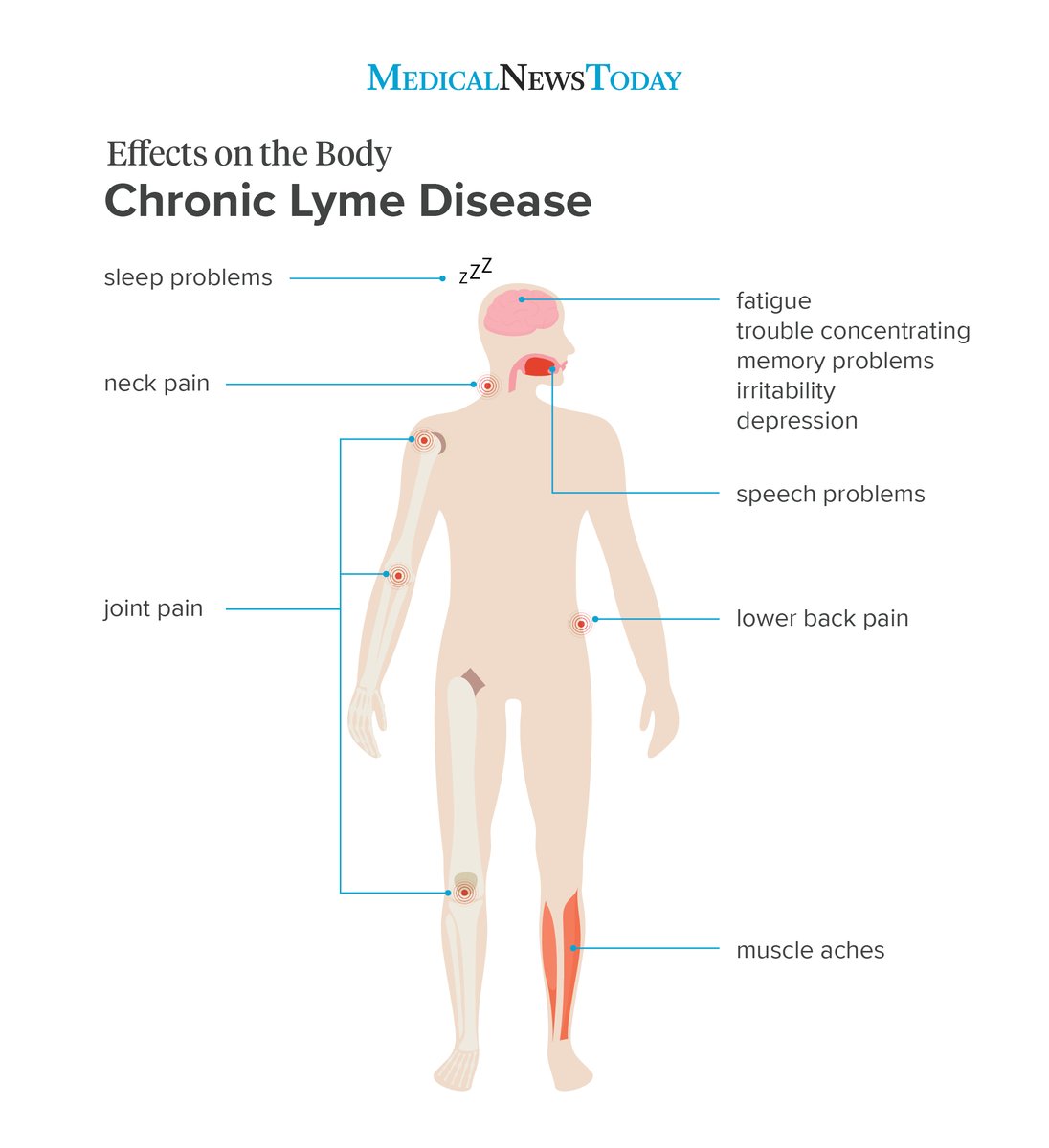
Examples of topical therapy include:
- Calcineurin inhibitors, such as tacrolimus, reduce plaques and inflammation
-
Coal tar comes in creams, oils and shampoos and reduces inflammation, scaling and itching -
Corticosteroids such as hydrocortisone, triamcinolone (Acetonide, Trianex), clobetasol (Temovate) control flares -
Salicylic acid shampoos reduce scaling on the scalp -
Vitamin D slows skin cell growth
Phototherapy (Light Therapy)
Phototherapy is the go-to treatment for moderate to severe psoriasis. The doctor may recommend it alone or with medications. This type of therapy exposes the skin to controlled amounts of artificial or natural light to control psoriasis.
The light source may be natural sunlight, also called heliotherapy. Artificial light techniques include UVB broadband and narrowband therapy, Psoralen plus ultraviolet A and targeted laser therapy.
Side effects include skin dryness, itchy skin, skin burns, freckles, increased sun sensitivity and increased skin cancer risk. Moisturizing regularly may help with itchiness and dryness.
Other Medications
Medications for psoriasis include immunosuppressants and biologic agents that suppress the immune system to prevent psoriasis symptoms. These drugs reduce the body’s ability to fight off infections and may cause damage to organs such as the liver and kidneys.
Medications for psoriasis include:
- Cyclosporine, a drug that treats severe psoriasis
-
Methotrexate, a drug that slows down skin cell grows and decreases inflammation -
Acitretin, a vitamin A derivative that is effective for pustular psoriasis but may cause hair loss, liver and bone problems as well as birth defects -
Biologic agents such as Enbrel (etanercept), Xeljanz (tofacitinib), Humira (adalimumab), Remicade (infliximab) and others that suppress the immune system are the most effective drugs for severe psoriasis. But they can increase the risk of infections and certain types of cancer.
But they can increase the risk of infections and certain types of cancer.
Psoriasis vs. Eczema
Psoriasis and eczema both cause itchy, red skin and it can be difficult to tell these rashes apart. The biggest difference is that psoriasis is an autoimmune disorder, and eczema is not.
Psoriasis tends to have a milder itchiness, whereas eczema can be more intense. The places most commonly affected by psoriasis are the scalp, elbows, knees, buttocks and face. Eczema most often occurs on the inside of the elbows or the back of the knees.
The rash caused by eczema usually comes with fluid leaking through the skin, whereas psoriasis is a thicker plaque with dry scaling.
The best way to tell these two rashes apart is to see a dermatologist.
Stevens-Johnson Syndrome | Symptoms, Causes, Diagnosis, Treatment
Stevens-Johnson syndrome is a hypersensitivity reaction.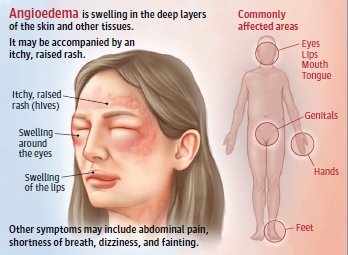 This means the immune system overreacts, causing inflammation, skin rashes and other symptoms, but it’s not contagious. SJS may also be called erythema multiforme major and is often grouped together with toxic epidermal necrolysis (TEN), which is a similar condition with more severe symptoms.
This means the immune system overreacts, causing inflammation, skin rashes and other symptoms, but it’s not contagious. SJS may also be called erythema multiforme major and is often grouped together with toxic epidermal necrolysis (TEN), which is a similar condition with more severe symptoms.
SJS is rare, and it affects about one to two million people each year, according to the U.S. Library of Medicine. People of all ages can get SJS.
It typically starts within one to three weeks after taking a drug. The chance of dying from this disease is about ten percent, while up to 50 percent of people with TEN may die. People who survive the disease may take weeks or months to recover.
This disease is a medical emergency, and people who notice symptoms should seek medical care immediately.
EXPAND
Symptoms
The first symptoms of SJS start around one to three weeks after taking a drug and include headache, cough, fever, body aches and inflammation in the eyes.
A few days after these flu-like symptoms, people with SJS develop a flat red rash on the face, trunk and neck that spreads to the rest of the body and begins to blister. SJS rash affects up to 10 percent of the body’s surface.
The painful rash spreads to the mouth, throat, eyes, genitals and anus. It makes it difficult to urinate and swallow. If it affects the digestive and respiratory tract, people may have diarrhea and difficulty breathing.
Symptoms of SJS include:
- Blistering, peeling rash with sores on the skin
-
Blisters and sores on mucus membranes of the throat, mouth, eyes, anus and genitals -
Blisters and swelling causing eyes to crust shut -
Body aches -
Cough -
Fever -
Painful mouth that is difficult to close and may cause drooling -
Painful urination from blistered mucous membranes
Complications
SJS affects the skin and mucous membranes and it may lead to other health problems.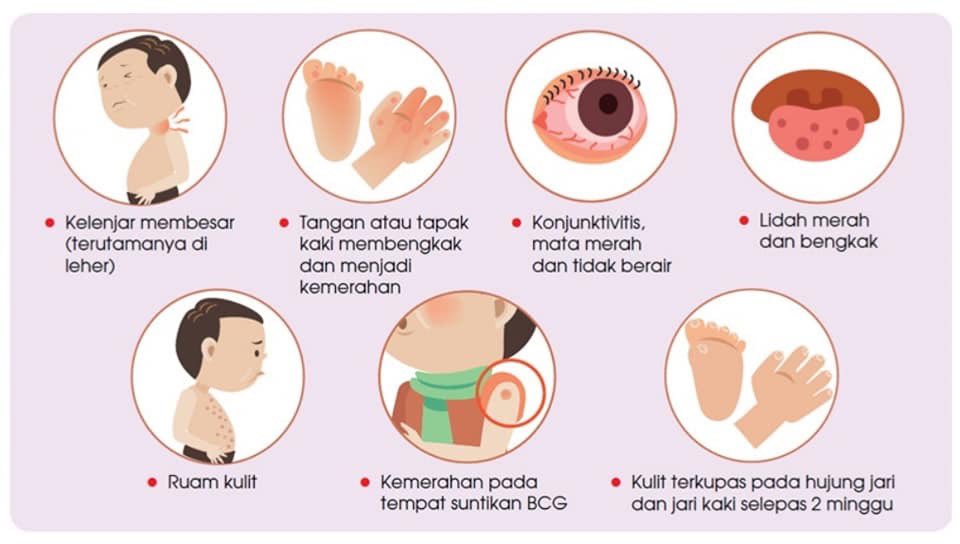 The most severe complication is death.
The most severe complication is death.
SJS complications include:
- Dangerous loss of fluids through damaged skin
-
Eye problems -
Uneven skin color after regrowth of skin -
Problems with internal organs such as the heart, lungs, liver, kidneys and esophagus -
Multi-organ failure -
Skin infections that can lead to sepsis (blood poisoning) -
Death
Causes
Reactions to medications and infections are the causes of SJS.
Drug reactions are the most common cause in adults, and about 60 percent of cases can be linked to certain medications, according to an article published in U. S. Pharmacist by Melissa A. Ruminski and colleagues. In fact, researchers have identified more than 100 drugs that could trigger SJS.
S. Pharmacist by Melissa A. Ruminski and colleagues. In fact, researchers have identified more than 100 drugs that could trigger SJS.
Drugs
The highest risk drugs include anticonvulsants, anti-gout medications and some nonsteroidal anti-inflammatory drugs (NSAIDs). The anticonvulsant Lamictal has a black box warning for the risk of SJS and other serious rashes.
Common drugs linked to SJS include:
- Antigout: Zyloprim (allopurinol)
-
Antibiotics: sulfonamides, penicillins, fluoroquinolones, tetracyclines, macrolides -
Anticonvulsants: Lamictal (lamotrigine), Tegretol (carbamazepine), Dilantin (phenytoin), Depakote (valproate) -
Antiretrovirals: Viramune (nevirapine) -
Pain Relievers: NSAIDs (ibuprofen, diclofenac meloxicam), Tylenol (acetaminophen)
SJS Linked to Provigil & Nuvigil
In rare cases, wakefulness drugs Provigil and Nuvigil can cause potentially fatal skin rashes, including Stevens-Johnson Syndrome.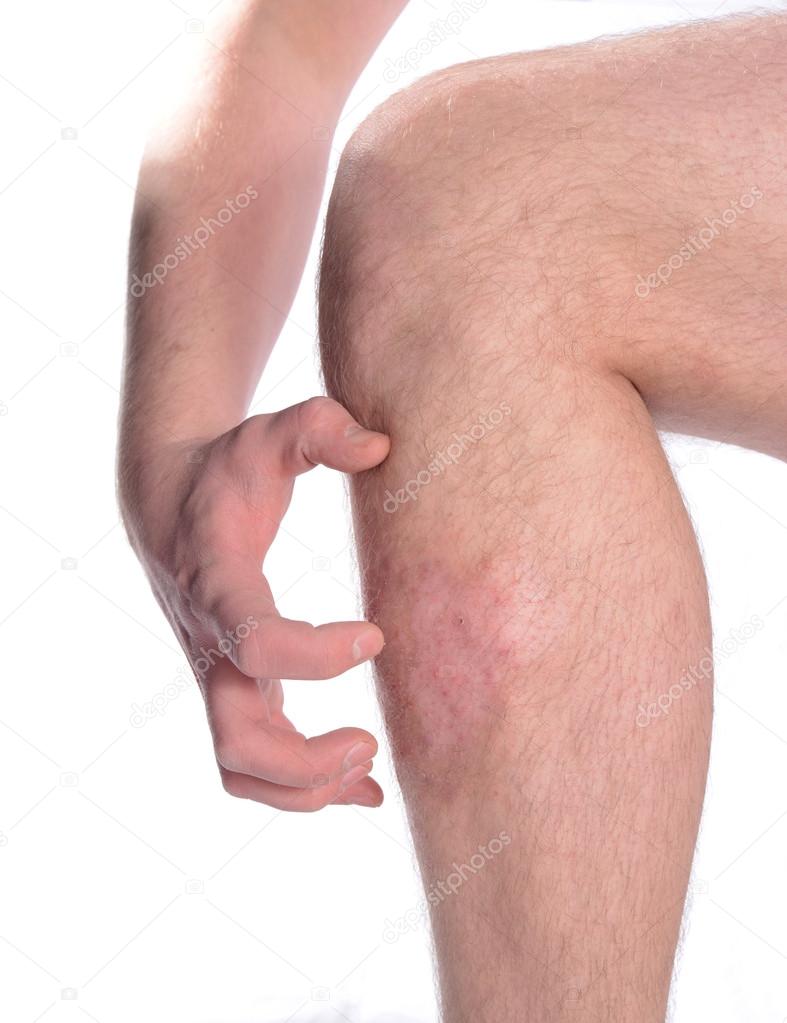 Learn more.
Learn more.
View Side Effects
Infections
Viral infections are more likely to cause SJS in children, but adults may also get the disease from an infection. Although less common, bacterial infections may also trigger a reaction.
Infections linked to SJS include:
- Coxsackie virus
-
Epstein-Barr virus -
Flu -
Herpes-simplex virus -
Mumps -
Pneumonia
Risk Factors
Some factors can increase a person’s risk for SJS. These include genetics and having other health conditions.
Risk factors include:
- Autoimmune diseases (psoriasis, rheumatoid arthritis and others)
-
Bone marrow transplant -
Females are more likely to get it than males -
Genetics – specific human leukocyte antigens (HLAs) -
HIV -
Organ transplant -
Previous history of SJS -
Systemic lupus erythematosus -
Weakened immune system
Diagnosis & Treatment
There is no specific test for SJS. In order to diagnose it, medical providers will ask questions, take blood samples, do a skin biopsy and examine the rash.
Most people with SJS end up in the hospital for treatment.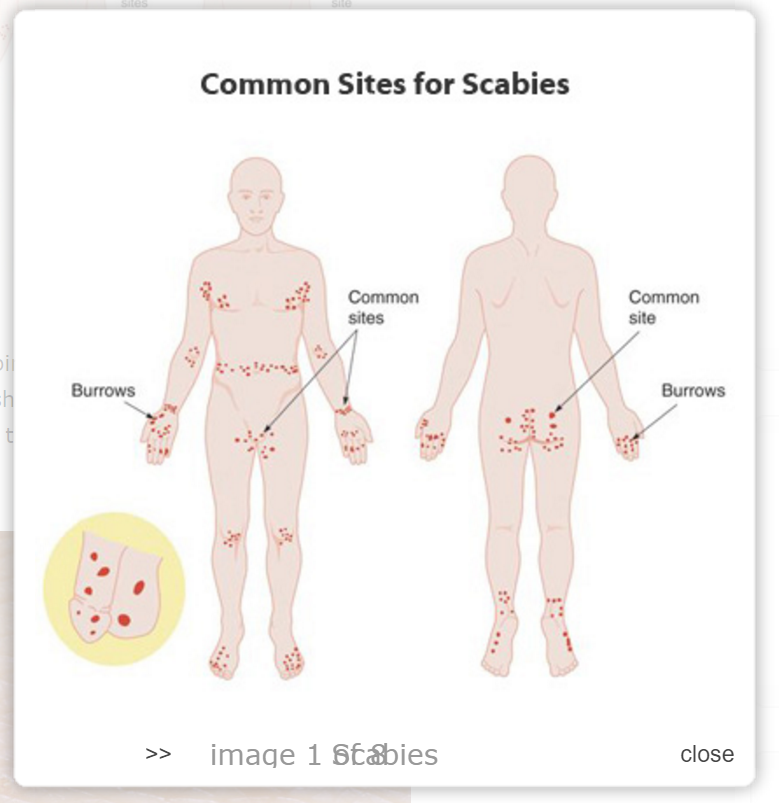 Doctors will look at any drugs that may have caused the reaction and stop the medication. Because of the extent of skin damage, some people may be treated in the burn unit of the hospital and receive special care to prevent infections.
Doctors will look at any drugs that may have caused the reaction and stop the medication. Because of the extent of skin damage, some people may be treated in the burn unit of the hospital and receive special care to prevent infections.
Sometimes, a patient may receive a plasma exchange. A plasma exchange involves removing blood and separating the plasma from the blood cells and platelets. The theory is that this treatment may remove the drug or antibodies that could be causing the reaction.
Once the drug that has been causing the reaction has stopped or the infection that triggered the reaction is treated, the rash will go away. After a few days, new skin will grow.
Treatment for SJS focuses on controlling symptoms and making the patient comfortable. It may include:
- Antiseptic, anesthetic mouthwashes to relieve mouth pain
-
Cool, moist compresses -
Corticosteroids to control skin inflammation -
Eye ointments or drops for eye symptoms -
Fluids and nutrition passed through a nasogastric tube, a tube that goes to your stomach through the nose -
Painkillers to help soothe the pain of raw skin -
Removing dead skin and applying dressings -
Unscented lotions to moisturize and calm skin
Recovering from SJS
The severity of the reaction determines how long it will take to recover.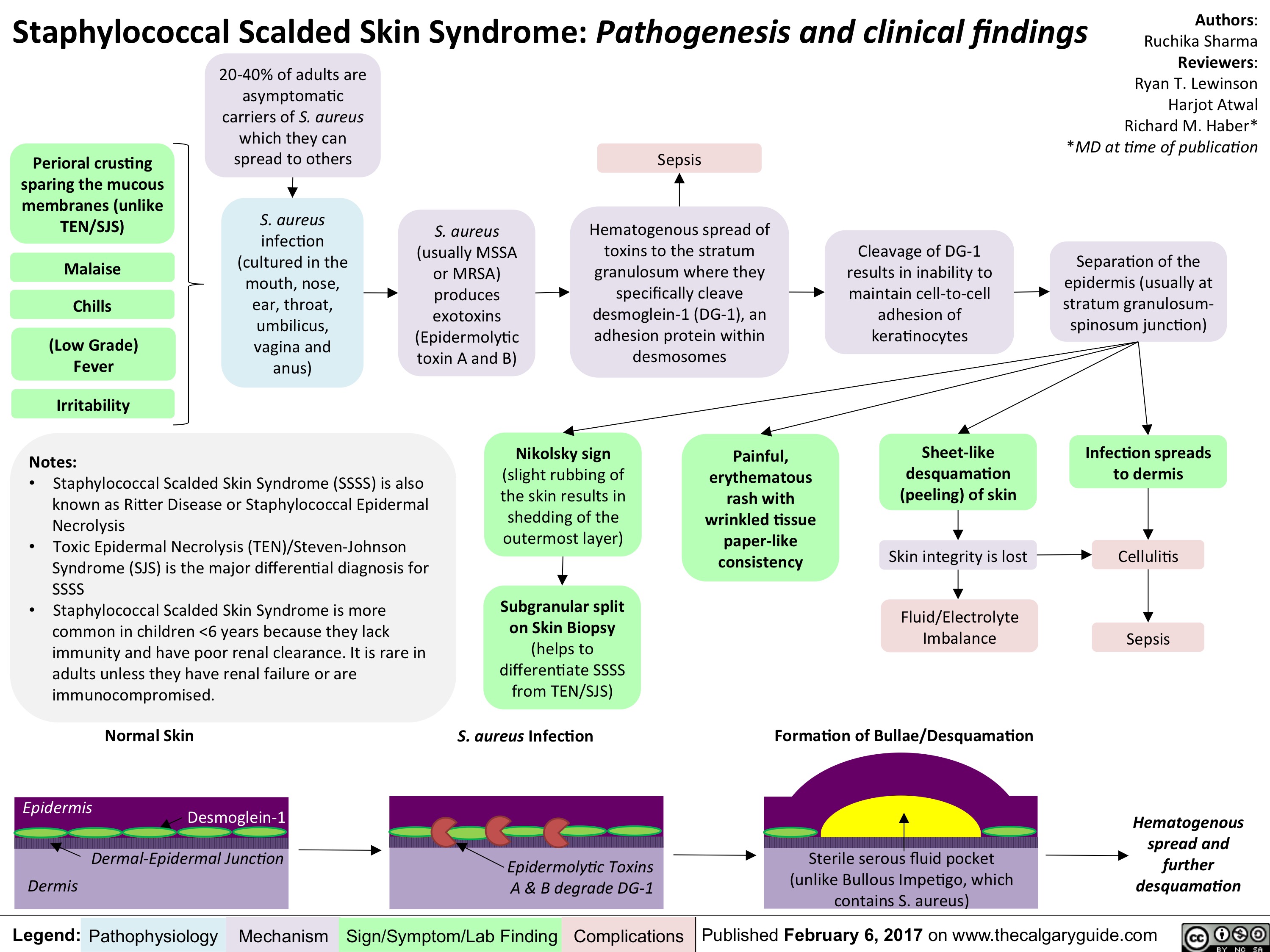 Even after the reaction stops, it can take weeks or months to recover, and fatigue after leaving the hospital may last for weeks.
Even after the reaction stops, it can take weeks or months to recover, and fatigue after leaving the hospital may last for weeks.
People who survive SJS or TEN may have long lasting complications. These include dry, discolored skin, hair loss, excessive sweating and loss of fingernails and toenails.
Some people may also have impaired taste, genital abnormalities, problems urinating and chronic dry eyes which may increase sensitivity to light and impair vision.
Make sure you talk to your doctor about how to avoid the medication that caused the reaction and medicines similar to it. After you’ve had SJS, you have an increased risk of developing it in the future.
There is no way to prevent it, but you can make sure you don’t expose yourself to medication that could trigger a reaction. Make sure you talk to your doctor about any medications before starting them.
Please seek the advice of a medical professional before making health care decisions.
Share This Page:
https://www.drugwatch.com/health/rash-and-skin-disorders/stevens-johnson-syndrome/Copy Link
5 Life-Threatening Skin Rashes & Their Symptoms
Rashes are common conditions with a variety of causes. Most rashes are not dangerous, but are rather a mere nuisance. Life-threatening skin rashes are rare, but when they do occur, you must seek immediate medical help.
Five potentially life-threatening disorders that have skin rash as the primary symptom are:
- Pemphigus vulgaris (PV)
- Stevens-Johnson syndrome (SJS)
- Toxic epidermal necrolysis (TEN)
- Toxic shock syndrome (TSS)
- Staphylococcal scalded skin syndrome (SSS)
All of these diseases have one or more of the following features:
- The rash affects the entire body, or most of it.
 The rash affects both the skin and the mucous membranes. Mucous membranes are the moist linings of the following:
The rash affects both the skin and the mucous membranes. Mucous membranes are the moist linings of the following:- Mouth and nose
- Eyes
- Anus/rectum
- Vagina or urethra, the opening for urine, in women
- Urethra, opening at the tip of the penis, in men
- Rashes have blisters on top of them. Blisters that accompany a serious rash usually have the following features:
- Blisters involve the thin outer layer of the skin that covers large parts of the body. This may mean several small blisters about 1 cm across or a few very large blisters several centimeters wide. Blisters are tense (full of fluid) at first, and then may become loose before breaking open. When they do rupture, the skin underneath is moist and usually painful. The underlying skin surface then dries up and crusts over.
- Pressing on a tense blister or scratching the skin next to a blister will extend the blister and make it larger. This is a common feature of these skin disorders.

- Blisters can involve any or all of the mucous membranes just listed. Blisters in these areas may not be noticeable because they rupture easily, especially in the mouth. Blisters on the mucous membranes that rupture may be very painful. When they occur in the mouth, pain makes it hard to eat or even drink.
What Causes An Autoimmune Rash? 10 Possible Conditions
What autoimmune conditions cause a rash on the skin? These are the most common autoimmune diseases that may cause rashes on your skin:
- Lupus
- Sjogren’s syndrome
- Dermatomyositis
- Psoriasis
- Eczema
- Hypothyroidism & myxedema
- Celiac disease
- Scleroderma
- Lichen planus
- Behçet’s disease
An autoimmune disease occurs when your body’s immune system attacks healthy cells within the body. This dysfunctional immune response may lead to various symptoms, like hair loss, skin rash, or even joint pain.
More than 20 million Americans suffer from autoimmune diseases such as rheumatoid arthritis or Hashimoto’s thyroiditis.
Why do autoimmune conditions cause a rash? Autoimmune conditions may cause a rash because they trigger inflammation in skin cells. These diseases are often characterized by chronic inflammation in your internal organs, your skin, and everywhere in between.
What do autoimmune rashes look like? Autoimmune rashes can look like scaly red patches, purplish bumps, or more. The appearance of autoimmune rashes will be different, depending on which autoimmune condition is triggering the skin rash.
For example, cutaneous lupus may cause a scaly red patch that does not hurt or itch. Scalp psoriasis may cause plaque buildup that results in hair loss. Lichen planus may cause purplish, itchy, flat bumps on your skin.
Learn more about the autoimmune conditions that may cause skin rashes. Here are 10 of the conditions that commonly cause autoimmune rashes and pictures of what these autoimmune skin disorders might look like on the average patient.
Lupus
Two-thirds of lupus patients will develop a skin condition. Skin disease in lupus may present as rashes or sores and lesions.
What autoimmune disease causes sun rash? Lupus is the autoimmune disease that is most likely to cause a sun-related rash. Up to 70% of lupus cases are worsened by sun exposure or extended time under fluorescent lights, a condition known as “photosensitivity.” Many lupus-related rashes appear on areas of the skin most heavily exposed to sunlight.
Unfortunately, people with lupus may also experience systemic flare-ups after sun exposure. Symptoms may include skin inflammation as well as fatigue, joint pain, and more.
autoimmune rash caused by lupus
Cutaneous lupus refers to a form of lupus that only affects the skin. (When people say “lupus,” they’re usually talking about systemic lupus erythematosus (SLE), which is different from cutaneous lupus.) You can have multiple forms of lupus or only one form.
The 3 types of cutaneous lupus:
- Acute cutaneous lupus often causes a butterfly rash (AKA malar rash) on your cheeks. This should not lead to scarring. However, this area will be sensitive to sunlight, and it may look like a sunburn.
- Subacute cutaneous lupus also occurs mostly on sun-exposed areas of your skin. The affected areas should not scar or itch. However, the affected areas may become discolored and scaly.
- Chronic cutaneous lupus is sometimes known as discoid lupus, even though “discoid” is the most common form of chronic cutaneous lupus among many. Discoid lupus is very sensitive to sunlight and even fluorescent light, producing small amounts of ultraviolet radiation. Discoid lupus may eventually lead to discoloration and scarring, though typically discoid lesions still do not itch or hurt. Discoid lesions on the head can cause hair to fall out permanently.
Neonatal lupus is a very rare condition that affects infants of mothers who have some form of lupus. At birth, the infant may exhibit a skin rash, low blood cell count, liver problems, or a slow heartbeat.
At birth, the infant may exhibit a skin rash, low blood cell count, liver problems, or a slow heartbeat.
Sjögren’s Syndrome
Sjögren’s syndrome is an autoimmune disease that can cause dry eyes and dry mouth. Mainly affecting women over 40, Sjögren’s syndrome affects up to 3 million Americans.
Individuals with Sjögren’s may develop a skin rash.
Sjögren’s syndrome may lead to the following skin problems:
- Dry, rough skin (AKA xerosis)
- Blood spots on your legs (AKA purpura) due to blood vessel inflammation (AKA vasculitis)
- Purple-to-red skin rash that does not lighten under pressure
- Red, ring-shaped skin lesions around a pale center (AKA annular erythema)
skin rash caused by Sjögren’s syndrome
If you experience purpura or annular erythema, schedule a visit with your doctor or dermatologist right away.
Although Sjögren’s syndrome does not seem to reduce life expectancy, it can reduce your quality of life. For instance, if Sjögren’s causes dry mouth, you may develop gum disease and cavities, which may drastically reduce your quality of life.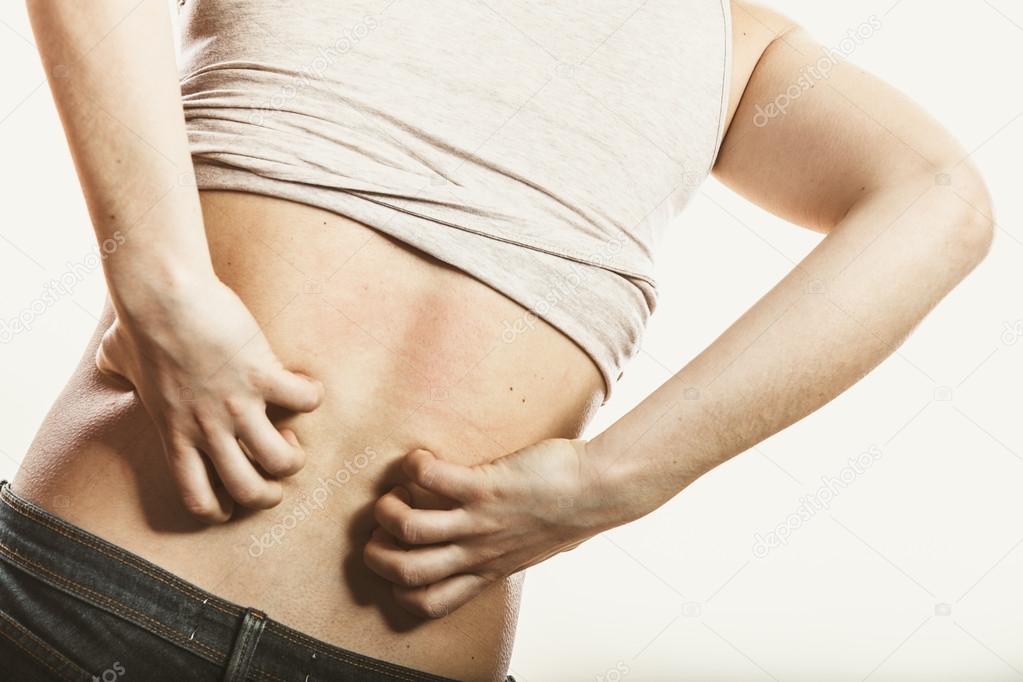
Dermatomyositis
Dermatomyositis is a very rare autoimmune disorder that affects a few thousand Americans, including juveniles. Common symptoms include:
- Muscle weakness
- Trouble swallowing (AKA dysphagia)
- Difficulty talking
- Fatigue
- Red or purple skin rash on a sun-exposed area
- Calcium deposits underneath your skin (AKA calcinosis)
- Inflammation around your fingernails
Dermatomyositis-related skin rashes most often occur in these 8 parts of the body:
- Eyelids
- Nose
- Cheeks
- Back
- Upper chest
- Elbows
- Knees
- Knuckles
Individuals who experience skin rash but not muscle weakness likely suffer from amyopathic dermatomyositis, also called “dermatomyositis sine myositis”.
Psoriasis
Psoriasis is a common autoimmune disorder. The most common symptom of psoriasis is a scaly skin rash. These skin problems may occur anywhere on the body, but psoriasis most commonly affects the elbows, knees, lower back, and scalp.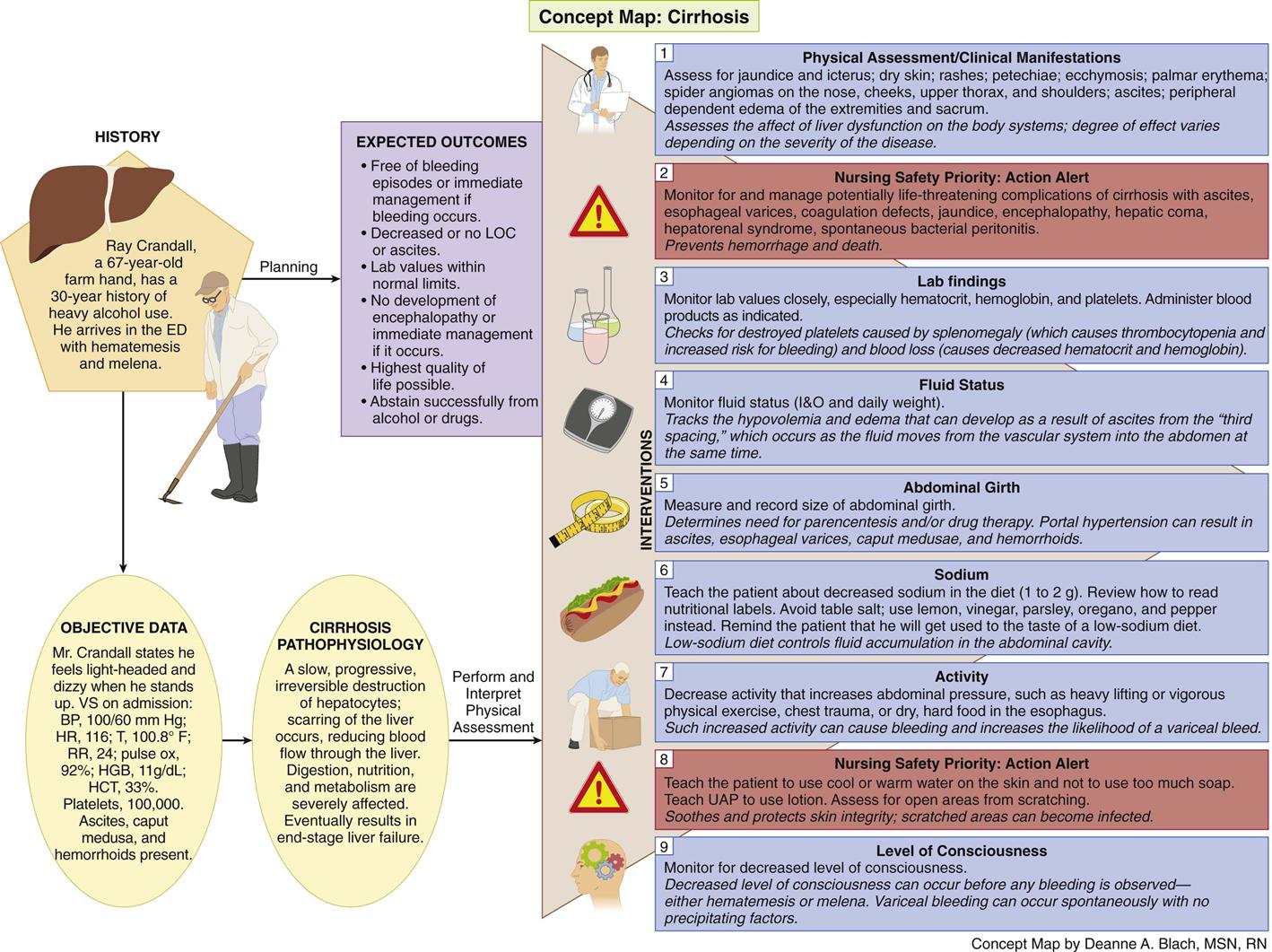
Psoriasis may be itchy and cause pain. Make sure you do not scratch or itch the psoriasis rash, which can lead to bleeding and infection.
plaque psoriasis rash
There are 7 types of psoriasis:
- Plaque psoriasis is the most common type of psoriasis skin rash. Small red bumps form, then get scaly and larger. Up to 90% of psoriasis patients experience this type of rash. 15% of people with plaque psoriasis develop psoriatic arthritis.
- Nail psoriasis leads to pits in fingernails and toenails and may result in loss of nails.
- Scalp psoriasis forms flakes that look like dandruff and possibly hair loss.
- Inverse psoriasis (AKA intertriginous psoriasis) occurs in the skin folds of individuals with psoriasis. Overweight individuals are particularly vulnerable to this form of psoriasis.
- Pustular psoriasis causes pus-filled bumps, usually on the feet and hands.
 These bumps may dry and get brown and scaly.
These bumps may dry and get brown and scaly. - Guttate psoriasis forms little red spots all over your skin after an infection.
- Erythrodermic psoriasis is a rare, life-threatening type of psoriasis. It includes a large patch of red skin, itching, and severe pain. It may be caused by intense sunburn, certain medications, or untreated psoriasis.
guttate psoriasis rash
What autoimmune disease causes an itchy rash? Some autoimmune diseases that may cause an itchy rash are cutaneous lupus, oral lichen planus, and erythrodermic psoriasis.
Eczema
Eczema is an itchy skin condition. Children are at a higher risk of getting eczema than adults. Though eczema often goes away after puberty, it can persist into adulthood.
The 2 basic types of eczema are:
- Atopic dermatitis: This is the most common form of eczema. Whether autoimmune or genetic, atopic dermatitis triggers a skin rash when the skin’s natural defenses are weakened.
 Many people experience atopic dermatitis, asthma, and hay fever together.
Many people experience atopic dermatitis, asthma, and hay fever together. - Contact dermatitis: This is an allergic reaction (or exposure to a chemical irritant), leading to an itchy skin rash. Contact dermatitis may also result in fluid-filled blisters or scaly patches.
eczema rash
Eczema can cause skin problems all over your body, especially on:
- Hands
- Feet
- Arms
- Legs
- Elbow
- Knees
- Scalp
- The back of the neck
What autoimmune diseases cause an itchy scalp? Psoriasis, eczema, and lichen planus are the autoimmune diseases that most commonly cause an itchy scalp.
Hypothyroidism & Myxedema
Severe, untreated hypothyroidism may lead to myxedema, which either means “severely advanced hypothyroidism” or skin problems related to severely advanced hypothyroidism.
Myxedema leads to skin changes, though these may not technically be considered rashes. Myxedema may result in swelling and thickening of your skin.
Myxedema may result in swelling and thickening of your skin.
rash caused by hypothyroidism-induced myxedema
Skin changes related to myxedema are most common:
- On your lower legs
- On the face
- On your tongue
However, these changes can occur anywhere on your body.
Severe hypothyroidism may also trigger these 9 symptoms:
- Goiter
- Fatigue
- Brittle hair
- Cold sensitivity
- Weight gain
- Low heart rate
- Low blood pressure
- Constipation
- Depression
Myxedema and severe hypothyroidism require immediate treatment and management. “Myxedema crisis” is when the body no longer tolerates the severe hypothyroidism symptoms. Your body starts to shut down. Myxedema crisis may result in coma, seizures, and death.
Call your doctor or emergency services immediately if you believe you’re having a myxedema crisis.
If you think you may have hypothyroidism, schedule a consult at PrimeHealth in Denver, Colorado. 90% of hypothyroidism cases are autoimmunity-related. Click here to learn how we treat hypothyroidism differently than other doctors.
Celiac Disease
Experts estimate that almost 1% of Americans suffer from celiac disease. Although celiac disease most frequently triggers gastrointestinal distress, it may also trigger an autoimmune rash.
Celiac disease occurs when gluten causes excessive gut inflammation, which may cause the following symptoms:
Celiac disease may result in “dermatitis herpetiformis”, an itchy, blistering rash on your skin. This usually appears on the elbows, knees, or buttocks.
dermatitis herpetiformis rash caused by Celiac disease
Surprisingly, fewer than 10% of individuals with celiac experience both skin problems and the more common digestive symptoms.
Scleroderma
Also known as systemic sclerosis, scleroderma is a condition in which your immune system mistakenly attacks your own healthy tissues, namely, the skin.
Scleroderma also affects the following:
- Blood vessels
- Digestive system
- Heart
- Joints
- Kidneys
- Lungs
- Muscles
scleroderma rash
When you have scleroderma, your skin changes in appearance and feel, due to increased collagen production. It may become shiny and thicker.
Morphea is sometimes synonymous with scleroderma, but morphea is actually a severe type of scleroderma. Morphea specifically refers to oval-shaped areas of thick, red skin.
Risk factors for scleroderma include:
- Female gender
- African-American or Native American heritage
- Exposure to silica dust
- Certain chemotherapy drugs
Lichen Planus
Oral lichen planus is an autoimmune disease that may trigger swelling and irritation on your skin, scalp, nails, genitals, and mucous membranes.
Lichen planus typically causes purple, itchy, flat bumps on the skin. It may also result in lacy-white lesions in the mouth.
Behçet’s disease
Behçet’s disease is a very rare autoimmune disorder that leads to blood vessel inflammation (vasculitis).
Behçet’s disease symptoms include:
- Skin rashes/lesions
- Mouth sores
- Eye inflammation
- Genital sores
rash caused by Behçet’s disease
Autoimmune Blistering Diseases
We’ve been talking a lot about skin rashes. However, some autoimmune conditions can cause skin blistering, too.
Also known as autoimmune bullous diseases, here are the most common autoimmune diseases that can cause blistering:
- Epidermolysis bullosa acquisita
- IgA-mediated bullous dermatoses
- Ocular cicatricial pemphigoid
- Bullous pemphigoid
- Pemphigus
Testing for Autoimmune Disease
No single test is designed to test for all autoimmune diseases. If you’re seeking a diagnosis, several blood tests can help your healthcare provider determine if you have an autoimmune disease.
Here are 4 common diagnostic tests for autoimmune disease:
- Antinuclear Antibody (ANA)
- Autoantibodies
- C-Reactive Protein (CRP)
- Erythrocyte Sedimentation Rate (ESR)
Treatment Options
How do you treat an autoimmune rash? The best way to treat autoimmune rash (and autoimmune disorders in general) is to identify and treat the underlying cause. There are many possible causes of autoimmunity.
Because there are multiple potential causes, conventional doctors often say autoimmune disorders are incurable. Then, they focus on treating the symptoms with anti-inflammatory drugs and other medications that often trigger adverse side effects and may lead to flare-ups.
Integrative medicine and functional medicine doctors are more equipped to diagnose and treat the underlying cause of autoimmune disease. Conventional doctors typically manage symptoms, instead of addressing the underlying cause.
Click here today to schedule a free phone consultation with us. We have successfully treated many patients with autoimmune rashes. Here at PrimeHealth, we empower patients to take an active role in their whole-person health.
Sources
- Grönhagen, C. M., & Nyberg, F. (2014). Cutaneous lupus erythematosus: An update. Indian dermatology online journal, 5(1), 7. Full text: https://www.ncbi.nlm.nih.gov/pmc/articles/PMC3937495/
- Talha, B., & Swarnkar, S. A. (2019). Xerostomia. In StatPearls [Internet]. StatPearls Publishing. Full text: https://www.ncbi.nlm.nih.gov/books/NBK545287/
- Nair, P.A., Badri, T. (2020). Psoriasis. Full text: https://www.ncbi.nlm.nih.gov/books/NBK448194/
- Badri, T., Kumar, P., & Oakley, A. M. (2017). Plaque Psoriasis. Full text: https://www.ncbi.nlm.nih.gov/books/NBK430879/
- Belgrave, D. C., Simpson, A., Buchan, I. E., & Custovic, A. (2015). Atopic dermatitis and respiratory allergy: what is the link. Current dermatology reports, 4(4), 221-227. Full text: https://www.ncbi.nlm.nih.gov/pmc/articles/PMC4635175/
- Reunala, T. (1998). Dermatitis herpetiformis: coeliac disease of the skin. Abstract: https://pubmed.ncbi.nlm.nih.gov/9814827/
- Castro, C., & Gourley, M. (2010). Diagnostic testing and interpretation of tests for autoimmunity. Journal of Allergy and Clinical Immunology, 125(2), S238-S247. Full text: https://www.ncbi.nlm.nih.gov/pmc/articles/PMC2832720/
Types of, Symptoms, Treatment & Prevention
Overview
What are skin diseases?
Your skin is the large organ that covers and protects your body. Your skin has many functions. It works to:
- Hold in fluid and prevent dehydration.
- Help you feel sensations, such as temperature or pain.
- Keep out bacteria, viruses and other causes of infection.
- Stabilize your body temperature.
- Synthesize (create) vitamin D in response to sun exposure.
Skin diseases include all conditions that clog, irritate or inflame your skin. Often, skin diseases cause rashes or other changes in your skin’s appearance.
What are the most common types of skin diseases?
Some skin diseases are minor. Others cause severe symptoms. Some of the most common skin diseases include:
- Acne, blocked skin follicles that lead to oil, bacteria and dead skin buildup in your pores.
- Alopecia areata, losing your hair in small patches.
- Atopic dermatitis (eczema), dry, itchy skin that leads to swelling, cracking or scaliness.
- Psoriasis, scaly skin that may swell or feel hot.
- Raynaud’s phenomenon, periodic reduced blood flow to your fingers, toes or other body parts, causing numbness or skin color change.
- Rosacea, flushed, thick skin and pimples, usually on the face.
- Skin cancer, uncontrolled growth of abnormal skin cells.
- Vitiligo, patches of skin that lose pigment.
What are some types of rare skin diseases?
Many rare skin diseases are genetic, meaning you inherit them. Some rare skin diseases include:
- Actinic prurigo (AP), itchy rash in response to sun exposure.
- Argyria, changes in skin color due to silver buildup in your body.
- Chromhidrosis, colored sweat.
- Epidermolysis bullosa, a connective tissue disorder that causes fragile skin that blisters and tears easily.
- Harlequin ichthyosis, thick, hard patches or plates on the skin that are present at birth.
- Lamellar ichthyosis, waxy skin layer that sheds in the first few weeks of life, revealing scaly, red skin.
- Necrobiosis lipoidica, rash on the lower legs that can develop into ulcers (sores).
Symptoms and Causes
What causes skin diseases?
Certain lifestyle factors can lead to the development of a skin disease. Underlying health conditions may affect your skin, too. Common causes of skin diseases include:
- Bacteria trapped in your pores or hair follicles.
- Conditions that affect your thyroid, kidneys or immune system.
- Contact with environmental triggers, such as allergens or another person’s skin.
- Genetics
- Fungus or parasites living on your skin.
- Medications, such as the ones that treat inflammatory bowel disease (IBD).
- Viruses.
- Diabetes.
- Sun.
What are the symptoms of skin diseases?
Skin disease symptoms vary significantly, depending on what condition you have. Skin changes are not always due to skin diseases. For example, you may get a blister from wearing ill-fitting shoes. However, when skin changes show up with no known cause, they may be linked to an underlying condition.
Generally, skin diseases may cause:
Diagnosis and Tests
How is a skin disease diagnosed?
Often, a healthcare provider can diagnose a skin disease by visually examining your skin. If looking at your skin doesn’t provide clear answers, your provider may use tests such as:
- Biopsy, removing a small piece of skin to examine under a microscope.
- Culture, taking a skin sample to test for bacteria, fungus or viruses.
- Skin patch test, applying small amounts of substances to test for allergic reactions.
- Black light examination (Wood light test), using an ultraviolet (UV) light to view your skin’s pigment more clearly.
- Diascopy, pressing a microscope slide against a skin patch to see if the skin changes color.
- Dermoscopy, using a hand-held device called a dermatoscope to diagnose skin lesions.
- Tzanck test, examining the fluid from a blister to check for herpes simplex or herpes zoster.
Management and Treatment
How are skin diseases treated?
Many skin diseases respond well to treatment. Depending on the condition, a dermatologist (doctor specializing in skin) or other healthcare provider may recommend:
You may also reduce symptoms of skin conditions by making lifestyle changes:
- Avoid or limit certain foods, such as sugar or dairy, if your healthcare provider suggests it.
- Manage stress.
- Practice good hygiene, including proper skin care.
- Avoid excessive alcohol use and smoking.
Prevention
Are there conditions that put me at higher risk of developing a skin disease?
Some health conditions can increase your chances of developing a skin disease. You may be more likely to experience skin changes or symptoms if you have:
- Diabetes: People with diabetes may have trouble with wound healing, particularly on their feet.
- Inflammatory bowel disease (IBD): Some IBD medications can lead to skin problems such as vitiligo or eczema.
- Lupus: This chronic condition can lead to inflammation and skin problems, such as rashes, sores or scaly skin patches.
Skin changes can also be the result of pregnancy, stress or hormonal changes. For example, melasma is a common skin disease that mostly affects pregnant women. Conditions like alopecia areata, acne, Raynaud’s phenomenon or rosacea may get worse when you’re stressed.
How can I prevent skin diseases?
Some skin diseases are not preventable. For example, there is no way to change your genetics or prevent an autoimmune disorder.
You can take steps to avoid contagious or infectious skin diseases. You may prevent contagious skin diseases or reduce their symptoms if you:
- Avoid sharing utensils, personal items or cosmetics.
- Disinfect objects you use in public spaces, such as gym equipment.
- Drink plenty of water and eat a nutritious diet.
- Limit contact with irritants or harsh chemicals.
- Sleep seven to eight hours per night.
- Use sun protection to prevent sunburn and other sun damage.
- Wash your hands regularly with soap and water.
Outlook / Prognosis
Do skin diseases usually return after treatment?
Many skin conditions are chronic (long-lasting). Treatment can reduce symptoms, but you may need to continue medication or other treatments to keep symptoms at bay.
Some skin conditions go away without treatment. You may also have periods of remission (months or years with no symptoms).
Living With
What else should I ask my doctor?
You may also want to ask your healthcare provider:
- What is the most likely cause of this skin condition?
- What lifestyle changes can reduce symptoms?
- Do I need to take medication?
- Are there any side effects of treatment?
- If I choose not to have treatment, will the condition get worse?
A note from Cleveland Clinic
Skin diseases include all conditions that irritate, clog or damage your skin, as well as skin cancer. You may inherit a skin condition or develop a skin disease. Many skin diseases cause itchiness, dry skin or rashes. Often, you can manage these symptoms with medication, proper skin care and lifestyle changes. However, treatment can reduce symptoms and may even keep them at bay for months at a time. Many skin conditions never go away completely. Also, remember to check your skin for any changes, including new or non-healing spots or changes in moles. Most skin cancers can be cured if diagnosed and treated early.
Rashes or Sores in the Groin
Topic Overview
Rashes in the groin or genital area are usually caused by irritation of the skin from many sources, such as clothes rubbing against the skin. Rashes that occur without other symptoms are usually minor and often go away with home treatment.
Contact dermatitis
A common cause of a rash is contact with a substance that causes irritation or an allergic reaction (contact dermatitis). People who work with soaps, solvents, or detergents might splash these liquids on their clothes at waist level. Over time, the body can develop allergies to these substances.
Contact dermatitis is rarely serious. But it is often very itchy.
Other rashes in groin or genital area
- Jock itch (ringworm of the skin of the groin)
- Scabies caused by tiny mites that burrow into the outer layers of the skin
- Pubic lice
- Yeast infection (cutaneous candidiasis)
- Psoriasis. There are two types of genital psoriasis: inverse and penile. Inverse psoriasis causes bright red patches and may be itchy. Penile psoriasis causes pale red, scaling patches and does not itch or burn.
- Sexually transmitted infections (STIs). Sores, blisters, or ulcers, especially in the groin or genital area, may be the first symptom of several STIs. If you have a rash or growths in the groin or genital area, do not have sexual contact or activity until you have been evaluated by your health professional. This will reduce the risk of spreading a possible infection to your partner. Your sex partner may also need to be evaluated and treated.
Certain diseases may increase your risk of a serious infection. People with diabetes, peripheral arterial disease, or an impaired immune system may require medical treatment at the first signs of infection.
Credits
Current as of:
July 2, 2020
Author: Healthwise Staff
Medical Review:
William H. Blahd Jr. MD, FACEP – Emergency Medicine
Adam Husney MD – Family Medicine
Martin J. Gabica MD – Family Medicine
Martin J. Gabica MD – Family Medicine
Current as of: July 2, 2020
Author:
Healthwise Staff
Medical Review:William H. Blahd Jr. MD, FACEP – Emergency Medicine & Adam Husney MD – Family Medicine & Martin J. Gabica MD – Family Medicine & Martin J. Gabica MD – Family Medicine
90,000 Skin rashes – what to do? |
The slightest skin rash causes panic in a person! The first thing that patients try to do is heal on their own, which is categorically contraindicated.
The skin is a very intelligent organ, and the first responds to diseases of individual organs and systems. Why? The skin, gastrointestinal tract, endocrine system, urinary-genital system develop from the same embryonic tissue and therefore, the problem is in one of these systems – the skin screams sos with various rashes.Therefore, you do not need to diagnose yourself and self-medicate.
Diseases of the gastrointestinal tract are often accompanied. Stomatitis, cheilitis, therefore, it is important in the examination of such a patient to be examined for dysbiosis, which reveals a violation of the intestinal microflora. With a disease such as rosacea , an increased amount of a microorganism such as helicobacter pylori plays an important role, and the success of treatment depends on a good duet with a gastroenterologist. Very often, the presence of helminths in the body is manifested by sluggish allergic dermatoses, and when we have a skin disease that does not fit into the clinical diagnosis, it is imperative to conduct a study of feces and blood for the presence of helminths.
A large percentage of skin diseases are associated with liver diseases. These are spider veins, xanthomas, discoloration of the skin and mucous membranes . Here is a good assistant in diagnostics – ultrasound of the hepatobiliary system and blood biochemistry.
Long-term non-healing trophic ulcers, pyoderma, chronic furunculosis – a reason to think about diabetes, and hair loss or dry skin about thyroid diseases.
Late acne, excessive hair growth in women may indicate a violation of the reproductive system and will help us in the diagnosis of the study of hormones and ultrasound.
Dear patients! no need to panic at the sight of skin rashes, you need to contact a competent dermatologist who has clinical thinking and who knows the methods of laboratory diagnostics.
Make an appointment with a dermatologist by phone (863) 250-62-25
90,000 Skin diseases in inflammatory bowel diseases
Erythema nodosum.
The very name of the disease literally means “red bumps”, it is characterized by the appearance of red nodules that are usually located on the legs and ankles, and sometimes on the hands.These skin changes are more common in people with ulcerative colitis (2% to 4% of cases), although they can also appear in patients with Crohn’s disease of the colon (1% to 2%). In women, this disease is more common than in men. Erythema nodosum usually appears parallel to the recurrence of inflammation in the intestine, but sometimes skin manifestations can be observed immediately before the outbreak of inflammation in the intestinal wall. The skin symptoms subside at the same time as the intestinal symptoms disappear.
Gangrenous pyoderma.
This condition is characterized by suppuration of the skin and the formation of a deep ulcer in this place. Like erythema nodosum, pyoderma gangrenosum is most common on the shins and ankles, but sometimes on the hands. First, small blisters appear, then they merge together, break open, forming a deep, chronic ulcer. This disease is slightly more common in people with ulcerative colitis (5%) than in people with Crohn’s disease (1%).Antibiotics in injections and ointments are commonly used to treat pyoderma. But finally, the skin manifestations subside simultaneously with the disappearance of the intestinal symptoms.
Intestinal fistulas.
Sometimes ulcers of the intestinal mucosa can spread deep into the entire thickness of the intestinal wall, forming a pathological opening in the intestinal wall, called a fistula. A fistula is a normally absent communication (a small tunnel) between different parts of the intestine, between the intestines and the skin, or between the intestines and another organ such as the bladder or vagina.An external fistula (between the intestine and the skin) can cause continuous drainage of intestinal contents through an opening in the skin, and in some cases, the fistula can become infected with microorganisms and lead to an abscess, a problem that can be life-threatening if left untreated. Fistulas are more common in Crohn’s disease than in ulcerative colitis, occurring in about 30% of people with Crohn’s disease.
Anal fissure.
These are fissures in the anus (anus) or the skin around the anus where a secondary infection can develop.A fissure in the anus often causes soreness and bleeding during stool passage and anal itching.
Aphthous stomatitis.
Aphthous stomatitis is a small mouth ulcer that most often appears in the crease between the gums and the lower lip or on the sides of the base of the tongue. They usually appear during flare-ups of inflammatory bowel disease and usually subside when the inflammation of the bowel subsides.
Skin reaction to drugs.
In some cases, skin disorders are not the result of an inflammatory response in the body in ulcerative colitis, but rather a response to drugs used to treat IBD. Sulfasalazine, for example, can cause an allergic skin rash in some people. The reaction is due to the sulfur-containing components of this drug. New drugs, including mesalamine and olsalazine (Dipentum), are similar in action to sulfasalazine, but do not contain sulfur-containing groups.Hormones – Steroids can also cause skin problems with prolonged use. These include: stretch marks (stretch marks), thinning of the skin, exacerbation of acne (acne), swelling of the face and legs, slow healing of wounds.
| Full name | Position | Qualification category | Certificate | Education |
| Eltsova Natalya Vladimirovna | Chief Physician dermatovenerologist | Higher Dermatovenereology | Dermatovenereology 12.04.2019 0550270015119 | Higher, 1998 Nizhny Novgorod State Medical Academy |
| Khamitsaeva Irina Romanovna | Head of department Dermatovenereologist | Higher Dermatovenereology | Dermatovenereology 12/21/2020 0550270022291 | Higher, Moscow State University of Medicine and Dentistry, 2000. |
| Borisova Tatiana Timofeevna | Head of laboratory Doctor of clinical laboratory diagnostics | Higher Clinical lab.diagnostics | Clinical laboratory diagnostics 06/27/2017 0550270007479 | Higher, 1998 Moscow Medical Academy named after I.M. Sechenov |
| Kozlova Evgeniya Yurievna | Dermatovenereologist | Higher Dermatovenereology | Dermatovenereology 02.16.2018 0550270010045 | Higher, 1997 Moscow Medical Dental Institute |
| Kirillova Natalia Ivanovna | Dermatovenereologist | Higher Dermatovenereology | Dermatovenereology 10.02.2017 0177040056222 | Higher, 1983 2nd Moscow State Medical Institute named after V.I. N.I. Pirogov |
| Klimontova Tatiana Vladimirovna | Medical laboratory assistant | Higher Clinical lab. diagnostics | Clinical laboratory diagnostics 12/16/2019 1178270024845 | Higher, 1994 Kemerovo State University |
| Lyamina Elena Vladimirovna | Dermatovenereologist, Candidate of Medical Sciences | Higher Dermatovenereology | Dermatovenereology 16.10.2020 0550270021262 | Higher, 1996 Tver State Medical Academy |
| Samokhvalova Elena Viktorovna (parental leave) | Dermatovenereologist | b / k | Dermatovenereology 09/01/2017 0550270008008 | Higher, State Budgetary Educational Institution of Higher Professional Education “Russian National Research Medical University named after N.I. Pirogov “Ministry of Health of the Russian Federation 2015. |
| Sityukov Yuri Pavlovich | Dermatovenereologist | Higher Dermatovenereology | Dermatovenereology 16.10.2020 0550270021267 | Higher, 1st Moscow Medical Institute named after I.M. Sechenov, 1989 |
| Staforova Ksenia Nikolaevna | Dermatovenereologist | b / k | Dermatovenereology 06/15/2020 0550270020489 | Higher, Moscow State University of Medicine and Dentistry. A.I. Evdokimova, 2013 |
| Silakova Tatiana Alexandrovna | Dermatovenereologist | b / k | Dermatovenereology 27.03.2017 0146040012791 | Higher, 2011 SBEE HPE “Kursk State Medical University” MH and SR RF |
| Zaitsev Maxim Eduardovich | Dermatovenereologist | b / k | Dermatovenereology 08/31/2018 0277040002754 | Higher, 2016 GBOU VPO First Moscow State Medical University THEM. Sechenov “MH RF |
| Perevalova Maria Andreevna | Dermatovenereologist | b / k | Dermatovenereology 03.07.2020 107718 241897 | Higher, 2018 FSBEI HPE “Perm State Medical University named after Ak. E.A. Wagner “ |
| Tsareva Ekaterina Dmitrievna | Dermatovenereologist | Higher Dermatovenereology | Dermatovenereology 04/09/2016 0377060177925 | Higher, 2004 GOU VPO Russian State Medical University |
| Rogova Maria Denisovna | Dermatovenereologist | b / c | Dermatovenereology 27.11.2020 332400063533 | Higher, Federal State Budgetary Educational Institution of Higher Education “Tula State University”, 2018 |
| Muratova Ekaterina Alexandrovna | Dermatovenereologist | b / c | Dermatovenereology 12.07.2021 772300188328 | Higher, 2019 FSBEI HE “Russian National Research Medical University named after N.I. Pirogov “MH RF 2019. |
| Filatenkova Viktoria Petrovna | Medical laboratory assistant | Higher Clinical laboratory diagnostics | Clinical laboratory diagnostics 15. |

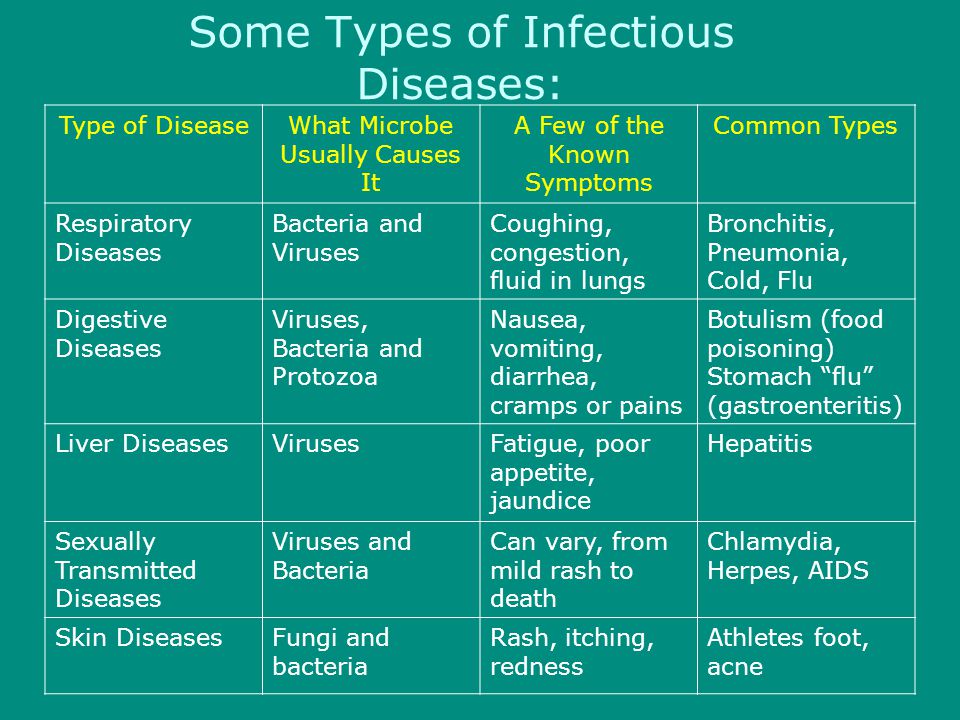 But they can increase the risk of infections and certain types of cancer.
But they can increase the risk of infections and certain types of cancer. The rash affects both the skin and the mucous membranes. Mucous membranes are the moist linings of the following:
The rash affects both the skin and the mucous membranes. Mucous membranes are the moist linings of the following:
 These bumps may dry and get brown and scaly.
These bumps may dry and get brown and scaly. Many people experience atopic dermatitis, asthma, and hay fever together.
Many people experience atopic dermatitis, asthma, and hay fever together.